
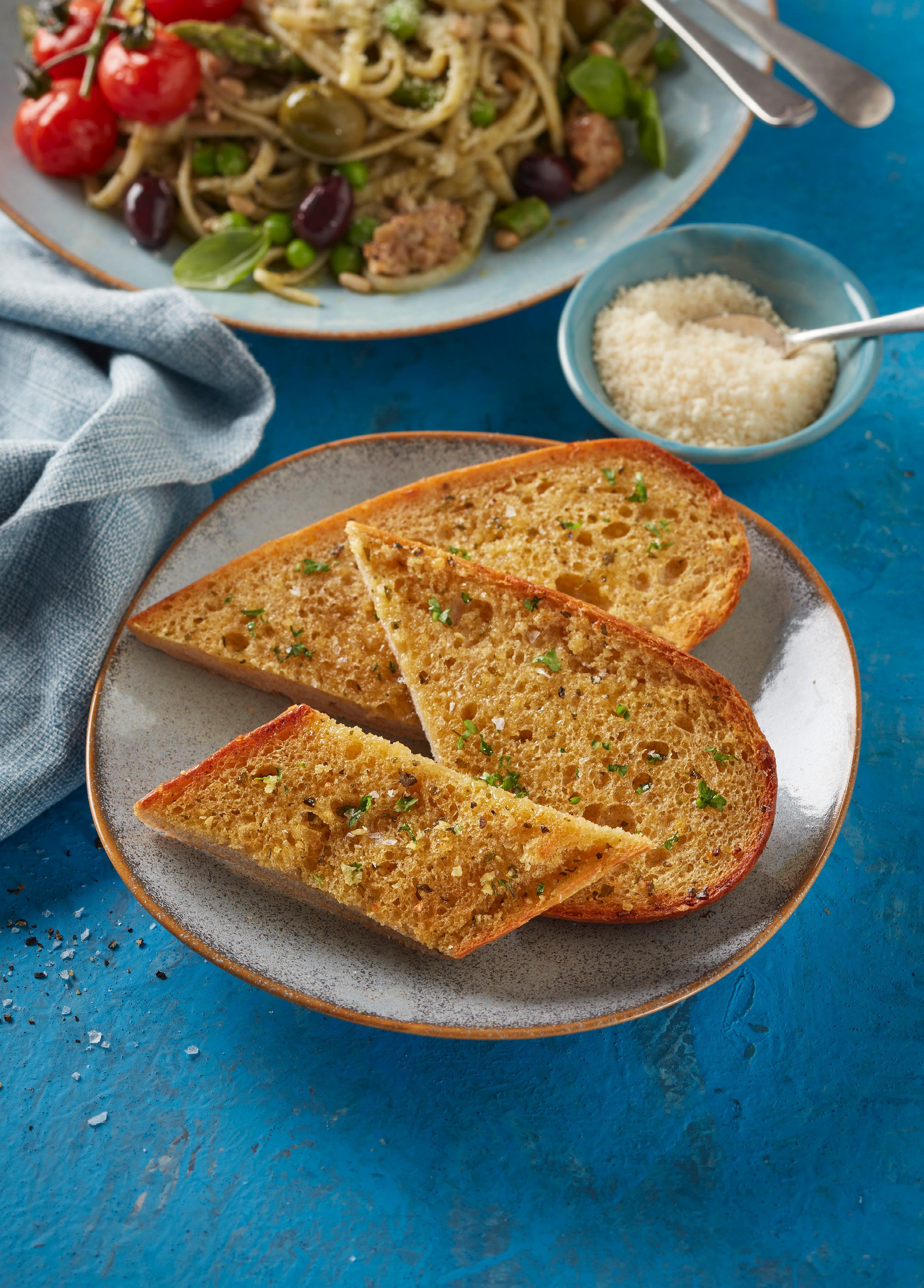
Introducing the new SOURDOUGH GARLIC BREAD LOAF NO.789 NOVEMBER 2022
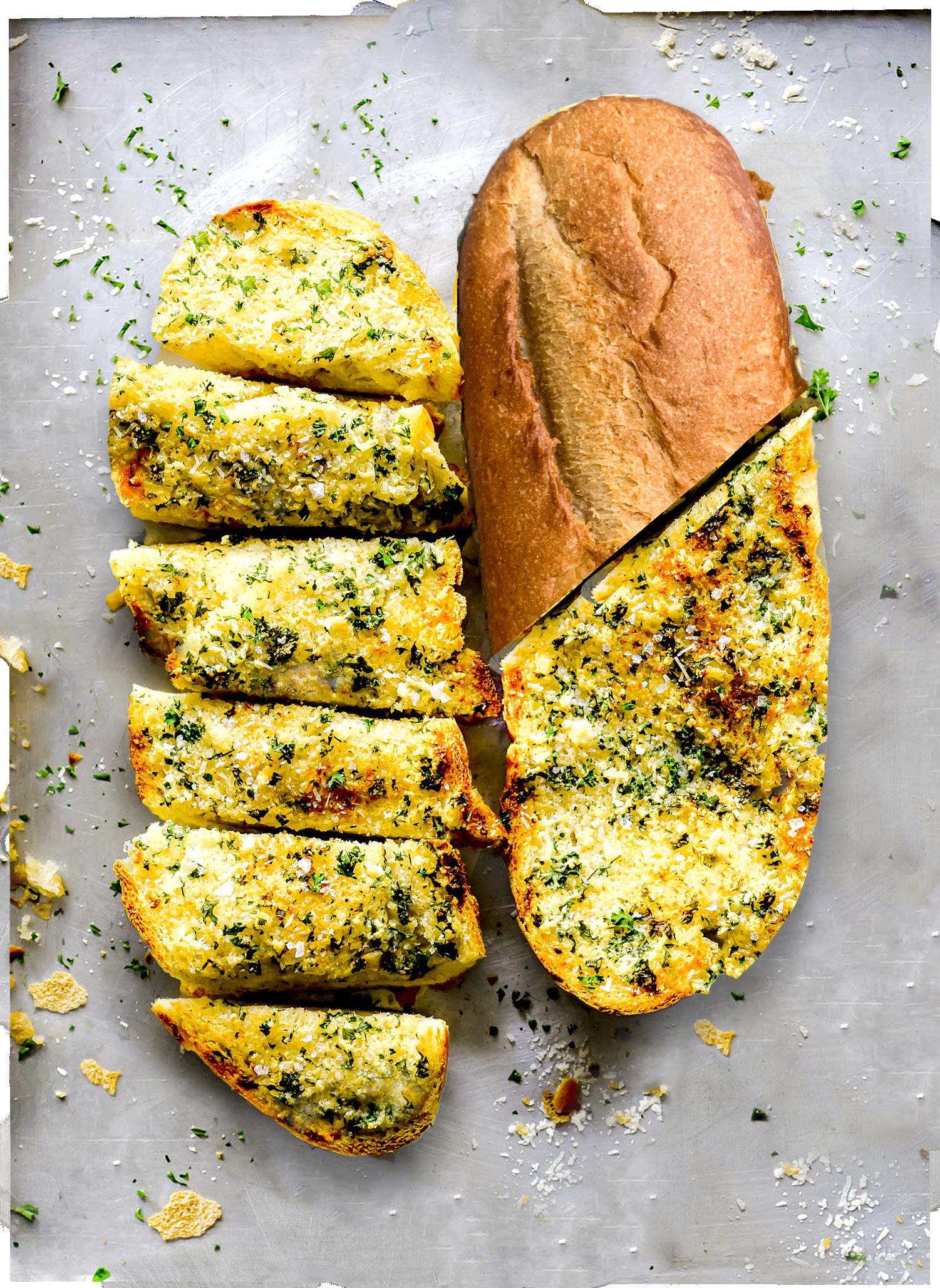



LIGHT CRUNCHY CRUST SOFT MOIST TEXTURE OPEN CRUMB SOAKS IN FLAVOUR © Registered trade marks of George Weston Foods Limited. All rights reserved. *2x more garlic compared to our 9” garlic bread sub per 100g (5510). AGB 8” Sourdough Garlic Bread 5642 - 40 pieces per carton CONTACT YOUR LOCAL FOODSERVICE DISTRIBUTOR TO ORDER TIPTOP-FOODSERVICE.COM.AU We’ve elevated every element of our new Sourdough Garlic Bread – from more garlic* to a delicious sourdough tang – so you can give your diners a better eating experience. SOURDOUGH GARLIC BREAD LOAF NEW S P R E A D T O T H E V E R Y E D G E ! 8 inch loaf, sliced horizontally 6 months frozen shelf life 1O min baking time at 17O°C Next-level. 2x MORE GARLIC * MILD SOURDOUGH TASTE


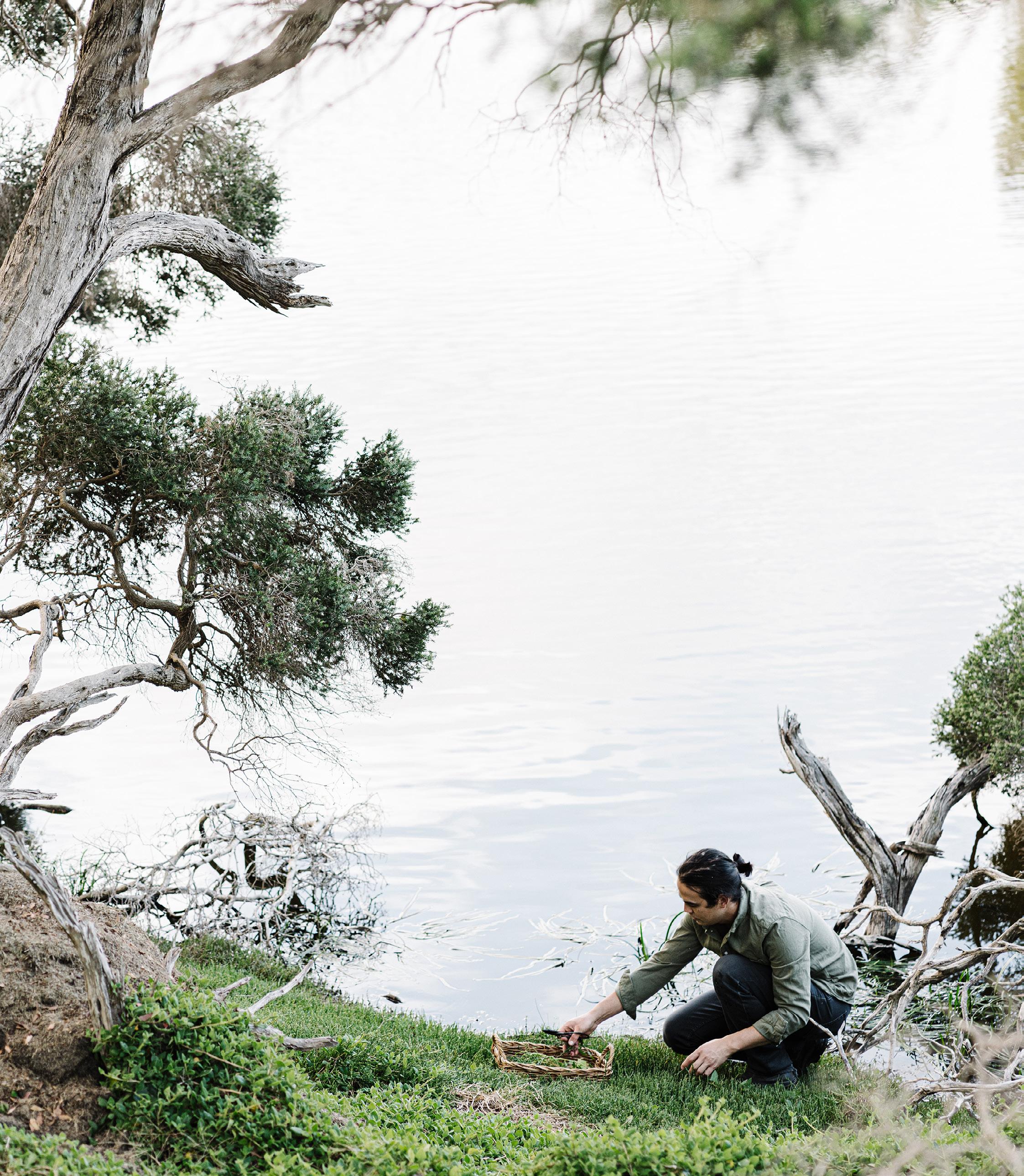 MOONAH
MOONAH
RESTAURANT • SHOKUPAN •
JOSH NILAND
X
TALISKER
NO.789 NOVEMBER 2022
Regulars
8 // IN FOCUS
Chef Josh Niland on his collaboration with Talisker.
12 // NEWS
The latest openings, books, events and more.
14 // PRODUCE
There are hundreds of species of sea urchins, but few are edible.
16 // RECIPE
Mitch Orr’s fried barramundi with Old Bay and pickled green tomato.
Contents
18 // BAR CART
Thirst quenchers, slow sippers and all things beverage related.
20 // DRINKS
The Greek wine industry is hitting its stride on a global level.

26 // PROFILE
Chef Tobin Kent’s Moonah takes a considered approach to fine dining.

54 // EQUIPMENT
Cocktail muddlers bring the best out of fresh ingredients.
56 // 5 MINUTES WITH …
Arilla’s Head Chef Adam Beckett.
Features
34 // HARD KOMBUCHA
The fermented fizzy drink is one to watch this summer.
40 // SHOKUPAN Japan’s signature loaf heroes the yudane method.

46 // VICTORIA PARK HOTEL
Alfresco dining is front and centre at the Perth pub.
4 | Hospitality
NOVEMBER 2022
26 4020 CONTENTS // November
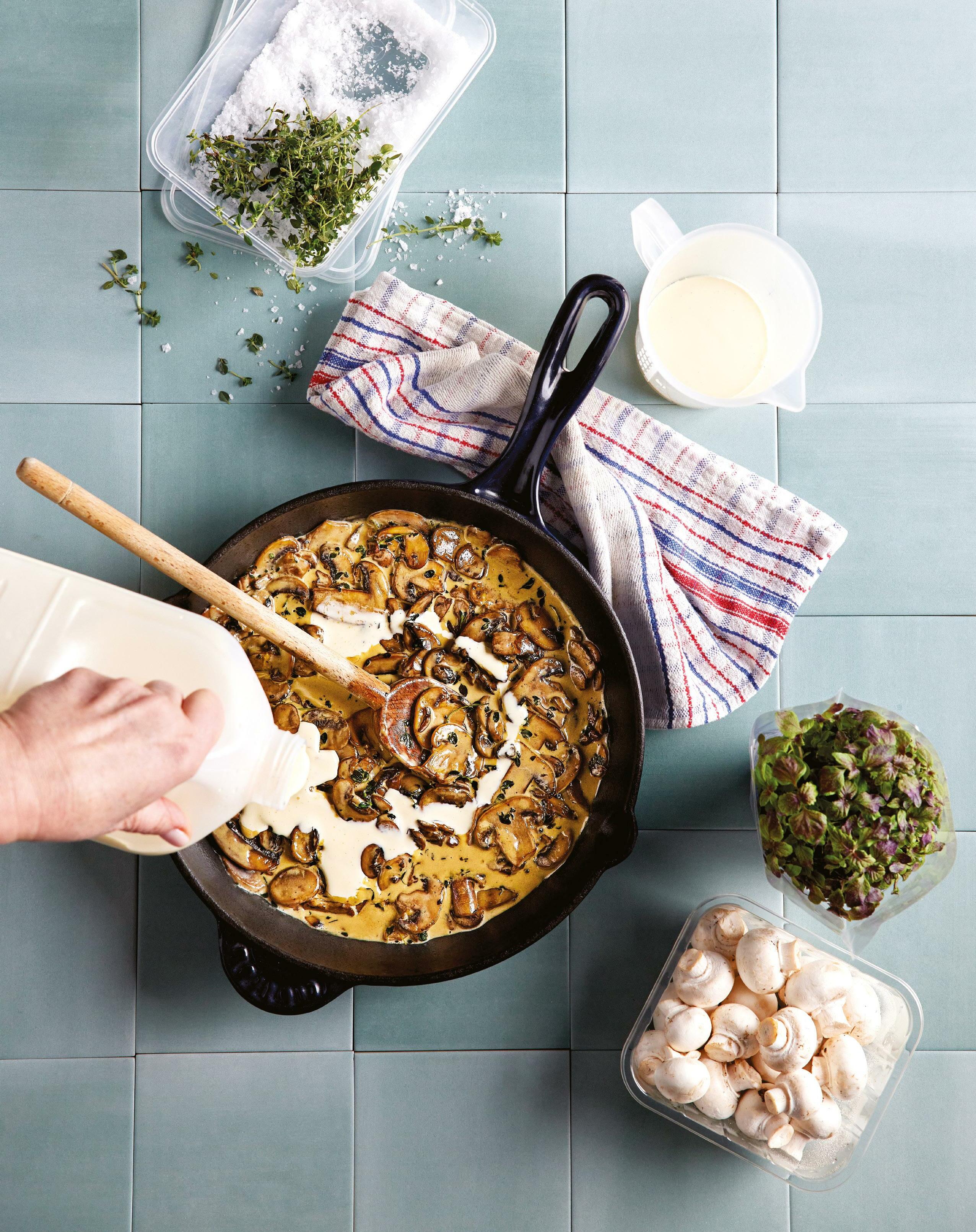

IntroducingNEW Cooking Cream Serving suggestion For more information, visit www.begafoodservice.com.au or contact customer sales on 1800 000 570. Heats quickly to high temperatures, without burning or splitting Full cream taste profile, with fresh aroma and silky mouthfeel Ideal viscosity for sauteing, reducing, pan-frying, baking, freezing and whipping 18% fatProudly Australian owned and made
A note from the editor
THE NOVEMBER ISSUE of Hospitality might be my favourite of the year — but there’s still one to go (Gamechangers returns), so it could certainly change. There’s no doubt Saint Peter’s Josh Niland has played a pivotal role in the local and international dining landscape, reshaping the way people cook and consume fish. The chef recently collaborated with Talisker for a pop-up overlooking the clifftops of North Head in Sydney, marking a rare occasion where patrons could experience Saint Peter outside the Paddington restaurant. Fish and whisky aren’t a common pairing, which was part of the allure of the partnership for the chef, who designed three courses to pair with three different whiskies. Read about it from p8.
Meanwhile, Mitch Orr has returned to the restaurant scene to head up the kitchen at Kiln at Ace Hotel Sydney. He’s also been


working with Australian barramundi and has created a range of recipes showcasing barra — our top pick sees the fish fried and teamed with Old Bay and green tomato.

Warmer weather means it’s tall-drink season, but many people are choosing to change their usual order and opt for something a little different. Ventura Brewing will soon launch Australia’s first hard kombucha taproom. The brewery is crafting the drink with a considered and slow approach, resulting in a sessionable bevvy.
This issue also covers Japanese milk bread, aka shokupan, a profile on 12-seat rural Victorian restaurant Moonah and a deep dive into the Greek wine industry.
Until next time, Annabelle Cloros Editor
Social
= $129.00

6 | Hospitality EDITOR ’ S NOTE // Hello DISCLAIMER This publication is published by Food and Beverage Media, a division of The Intermedia Group Pty Ltd (the “Publisher”). Materials in this publication have been created by a variety of different entities and, to the extent permitted by law, the Publisher accepts no liability for materials created by others. All materials should be considered protected by Australian and international intellectual property laws. Unless you are authorised by law or the copyright owner to do so, you may not copy any of the materials. The mention of a product or service, person or company in this publication does not indicate the Publisher’s endorsement. The views expressed in this publication do not necessarily represent the opinion of the Publisher, its agents, company officers or employees. Any use of the information contained in this publication is at the sole risk of the person using that information. The user should make independent enquiries as to the accuracy of the information before relying on that information. All express or implied terms, conditions, warranties, statements, assurances and repre sentations in relation to the Publisher, its publications and its services are expressly excluded save for those conditions and warranties which must be implied under the laws of any State of Australia or the provisions of Division 2 of Part V of the Trade Practices Act 1974 and any statutory modification or re-enactment thereof. To the extent permitted by law, the Publisher will not be liable for any damages including special, exemplary, punitive or consequential damages (including but not limited to economic loss or loss of profit or revenue or loss of opportunity) or indirect loss or damage of any kind arising in contract, tort or otherwise, even if advised of the possibility of such loss of profits or damages. While we use our best endeavours to ensure accuracy of the materials we create, to the extent permitted by law, the Publisher excludes all liability for loss resulting from any inaccuracies or false or misleading statements that may appear in this publication. Copyright © 2022– The Intermedia Group Pty Ltd PUBLISHER Paul Wootton pwootton@intermedia.com.au EDITOR Annabelle Cloros T: 02 8586 6226 acloros@intermedia.com.au JOURNALIST Aristine Dobson adobson@intermedia.com.au ADVERTISING NATIONAL Simon York T: 02 8586 6163 F: 02 9660 4419 syork@intermedia.com.au GROUP ART DIRECTOR –LIQUOR AND HOSPITALITY Kea Thorburn kthorburn@intermedia.com.au PRODUCTION MANAGER Jacqui Cooper jacqui@intermedia.com.au CIRCULATIONS To subscribe please call 1800 651 422. hospitalitymag azine.com.au facebook.com/ HospitalityMagazine twitter.com/Hospitalityed instagram.com/hospitalitymag SUBSCRIPTION RATES Australia: 1 year (10 issues) = $99.00 (inc GST) 2 years (20 issues) = $158.40 (inc GST) – Save 20% 3 years (30 issues) = $207.90 (inc GST) – Save 30% SUBSCRIPTION RATES New Zealand: 1 year (10 issues) = $109.00 Asia/Pacific 1 year (10 issues) = $119.00 Rest of World: 1 year (10 issues)
41 Bridge Road Glebe NSW 2037 Australia Tel: 02 9660 2113 Fax: 02 9660 4419 Average Net Distribution Period ending September 2019 – 11,506
Follow us @hospitalitymagazine #hospitalitymagazine PASTA PERFECTION A former Carbone chef has taken over the kitchen at Ronnie’s in Melbourne. @hospitalitymagazine WINGS AND THINGS Stuffed chicken wings with caviar — essential eating at Lana. @annabellecloros TABLE FOR TWO Dear Sainte Éloise’s out-of-this-world
anchovy toast.
@aristinedob
Keep up with the Hospitality team
juicy




www.nestleprofessional.com.au CRUNCHY,
NEW Serving suggestion
Scaling up
WORDS Annabelle Cloros
THE REALMS OF food and drink are intrinsically linked, constantly merging with each other throughout almost every meal. Think beer and wings, Champagne and oysters or Shiraz and steak. Whisky and seafood may not be a match on paper, but the idea presented a welcome challenge for Sydney chef Josh Niland. Throw in the creation of a bespoke pop-up restaurant overlooking the clifftops in North Head and you have Talisker’s Boathouse.
Niland speaks to Hospitality about creating a three-course menu that drew inspiration from whisky notes, aligning with a global brand and why the dots join up a little bit better cooking by the sea.
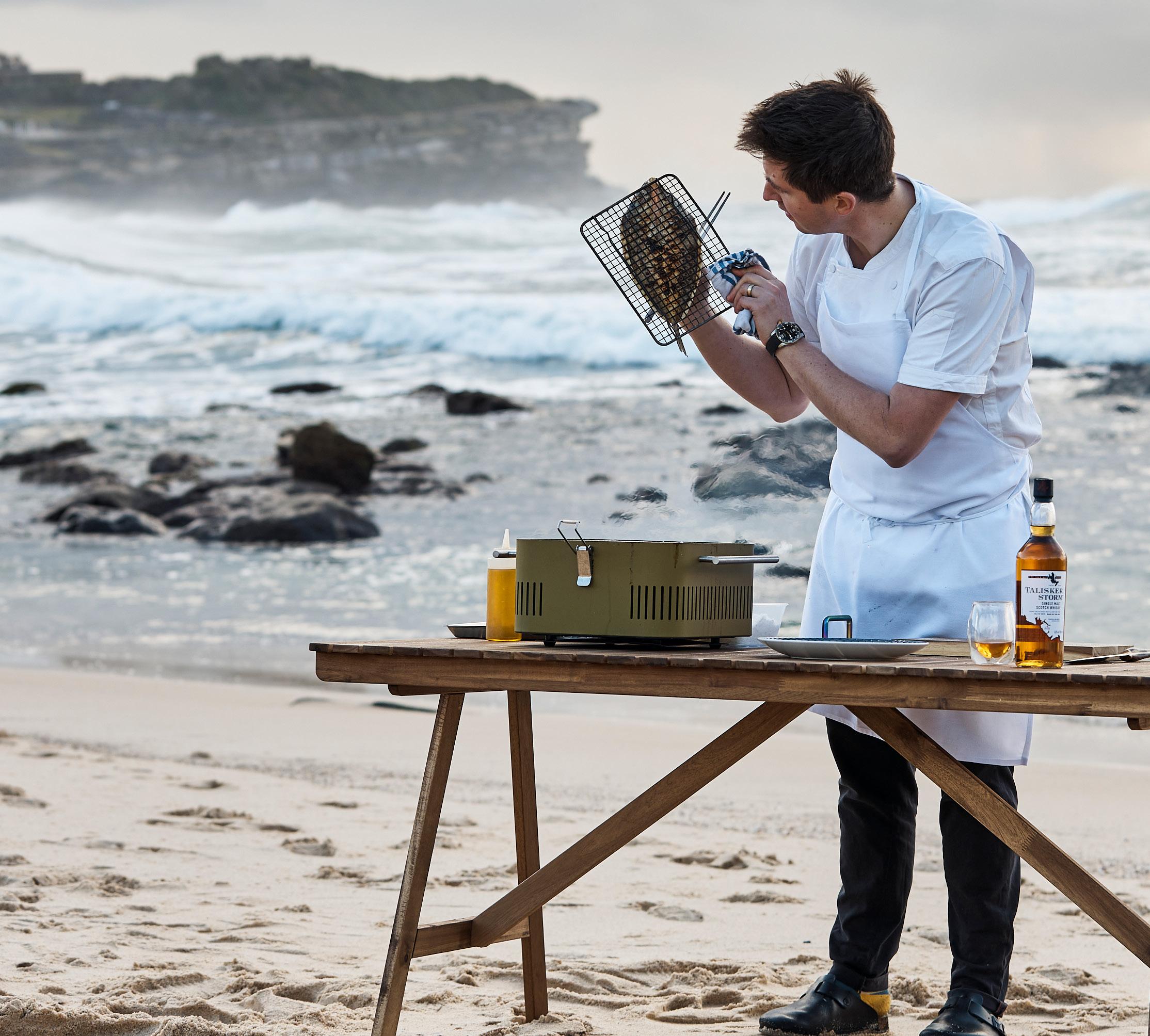
Josh Niland’s 18-seat restaurant Saint Peter is nothing short of experiential. The Paddington staple has been a gamechanger for Sydney fine dining since its launch, with the fish-centric concept going on to spawn Fish Butchery and Charcoal Fish.
It’s safe to say Niland has changed the way the public views and consumes seafood — specifically, fish. But like most people who spend years honing their craft, it’s easy to fall into a rhythm,
8 | Hospitality IN FOCUS // Saint Peter x Talisker
Whisky and fish combine by the sea at a one-off event helmed by Josh Niland.
which made Talisker’s Boathouse all the more interesting to the chef. “Although the rhythm involves Saint Peter, Fish Butchery and Charcoal Fish — and we do change the menus frequently — we don’t necessarily work within tight parameters,” says Niland. “From a creative point of view, it’s fascinating to think of whisky being paired with fish. I think it’s quite difficult, and the difficulty was the appeal.”

The three-course menu was largely influenced by what would go hand in hand with the flavour profiles of 10-Year-Old, Storm and Skye. “I was interested in all three whiskies because they are all super different; looking at the tasting notes was a big part of it,” says Niland. “Our food does start to blur the lines between fish and meat, and we are able to bring out the savoury flavours in fish, so it was about looking at what dishes were complementary to those notes.”
Sea salt, pepper, spice and smoke abound in the 10-Year-Old. The double-distilled whisky is aged for a decade in American oak casks — it also happens to be Niland’s favourite of the three. “When something is 10 years old, you feel a responsibility not to cock it up,” he laughs. “Anything with a bit of time on it appeals to me, so we did a salt and vinegar blue mackerel. It carries more salinity and minerality, which is consistent with the whisky.” The chef compares the fish to “a big anchovy — almost”, with the additions of salt and vinegar generating the palate for what’s to come. The dish was inspired by anchovies on toast and served with kamut sourdough and yoghurt cultured butter, with diners encouraged to get stuck in with their hands — tear off a piece of bread, swipe it with butter and top it with fish. “The butter helped with the oily quality of the whisky,” says Niland. “Without the butter and the acidity, it can warm you up a bit too much.”
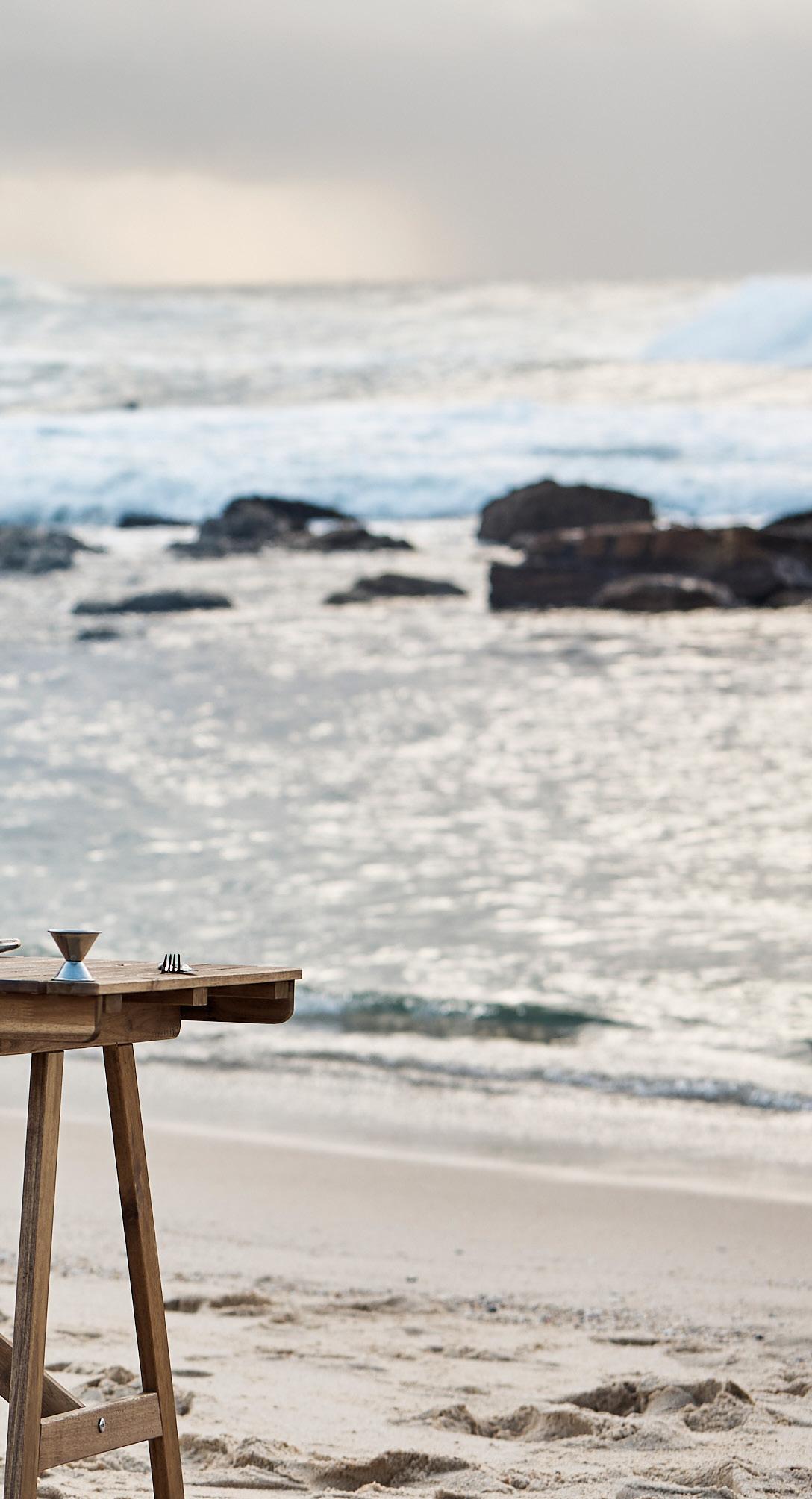
Course two saw Cornet Inlet squid paired with ’nduja made

IN FOCUS
// Saint Peter x Talisker
November 2022 | 9
“It’s fascinating to think of whisky being paired with fish. I think it’s quite difficult, and the difficulty was the appeal.” – Josh Niland
with yellowfin tuna. It’s a classic Saint Peter dish reworked with a thwack of heat and fat to go with Storm, which is heavy on the wood, brine and smoke. “Storm was one of the more challenging ones because of how robust it is,” says Niland. “But to have consistencies around how we prepared the calamari over the grill was a nice link to the smokiness.”
The chef says the ’nduja was the most important part of the Bolognese-ish dish that joined the elements on the plate together, describing chilli and whisky as the best of friends. “The fruitiness of the spices in the ’nduja allow some of the nuances of the whisky to come through, while the calamari is the textural vehicle that carries the ’nduja,” says Niland. “We added more oil to fatten it up and increased the spice.”
Niland’s final dish was served with Skye — a namesake, grassy ode that pays homage to the Cuillin rocky mountains via notes of citrus, sweet smoke and peppery spice. King George whiting is pigeonholed as a lighter fish oft sat next to lemon, but Niland says it can tolerate aromatics and some time over a high-heat grill. It’s a welcome contrast against the unctuous (in a good way) sauce, which combined a spoon of bergamot purée with tapioca and finger lime “for that burst and tightness of acidity”, says the chef “The tapioca carries the flavours of the sauce and the whisky once you finish eating. It’s a wonderful conduit to grab flavours and let them continue lingering. The tapioca and fat side by side was a nice pairing to go with the whiting, which has a glassy golden skin. When your teeth go through the bubbly blisters on the skin, there is smoke in all the pockets. I thought it was heaven.”
Taking the team out of the kitchen to North Head was also a sweetener to the partnership between Talisker and Saint Peter. “I haven’t cooked Saint Peter’s food somewhere else, and I really haven’t done this very much,” says Niland on the partnership. “It’s always interesting when a large brand comes along and wants to do something substantial. It’s a really nice opportunity

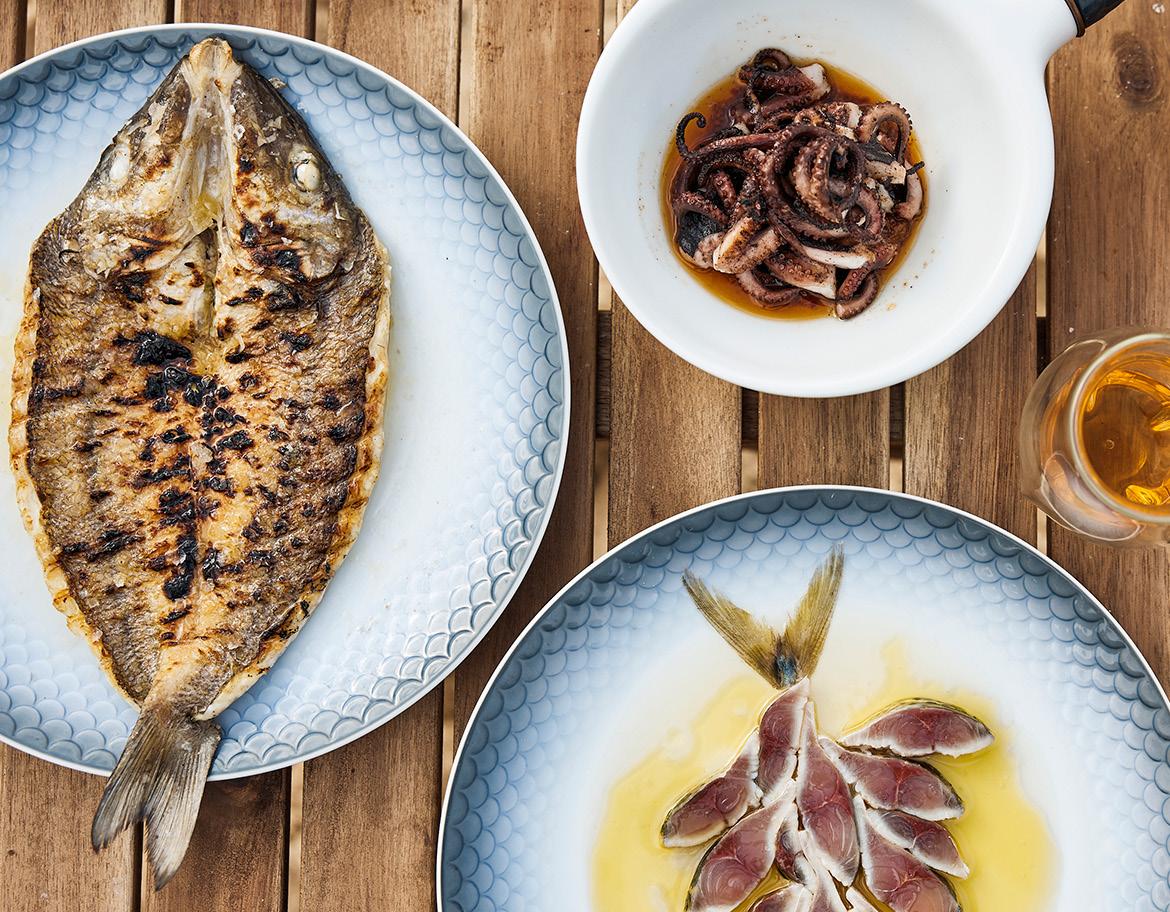

for us to use the other halves of our brains to do something quite interesting.”
Encouraging guests to contemplate the pairings was a bonus for Niland, who says the more people he can cook for, the better. “It’s why I do what I do — I enjoy feeding people and the generosity of the work we do,” he says. “I hope people see what we’ve done and can throw that hat on and understand the details in the food and the whisky, which are the heroes.”
While the pop-up dinner was a one-night-only event, it wasn’t the end for the three-course menu, which is available at Saint Peter for a limited time. Can confirm it’s well worth the visit.
10 | Hospitality
IN
FOCUS // Saint Peter x Talisker
■



Make the switch to Zero Cost EFTPOS* Join thousands saving thousands. *If your business has a turnover of $10,000 per month on card transactions, no terminal rental fees, otherwise, a fee of $34.95 + GST per month applies.
Entrée
The latest openings, books, events and more.
EDITED BY Annabelle Cloros
Best of the best
Sydney’s Maybe Sammy has been named the Best Bar in Australasia for the fourth consecutive year. The high-glam cocktail venue secured the no.29 position on the World’s 50 Best Bars list, with the pocket-sized Cantina Ok! taking out the no.41 spot. The good news was announced during a live ceremony held in Barcelona, which was attended by Co-Founder Stefano Catino. “We never would have dreamed we’d be one of the World’s 50 Best Bars four years in a row, let alone the Best Bar in Australasia four years in a row,” he says. “We’re really excited to [have been in] Barcelona with our friends and colleagues.” maybesammy.com

On a roll
Lune Kate Reid
Hardie Grant Books ; $55
Croissant connoisseur Kate Reid is the force behind Lune in Melbourne, Brisbane and soon-to-be Sydney. The shopfronts are known for their snaking lines of devotees who queue down the block, but now fans can bring the Lune experience into their own kitchen with Reid’s first book Lune: Croissants All Day, All Night Discover the step-by-step process to making one of the best croissants in the world plus rolling and shaping techniques, day-to-night recipes, ideas for leftovers and more in the pastry tome.
Adelaide welcomes Africola Canteen
The team behind Africola have added
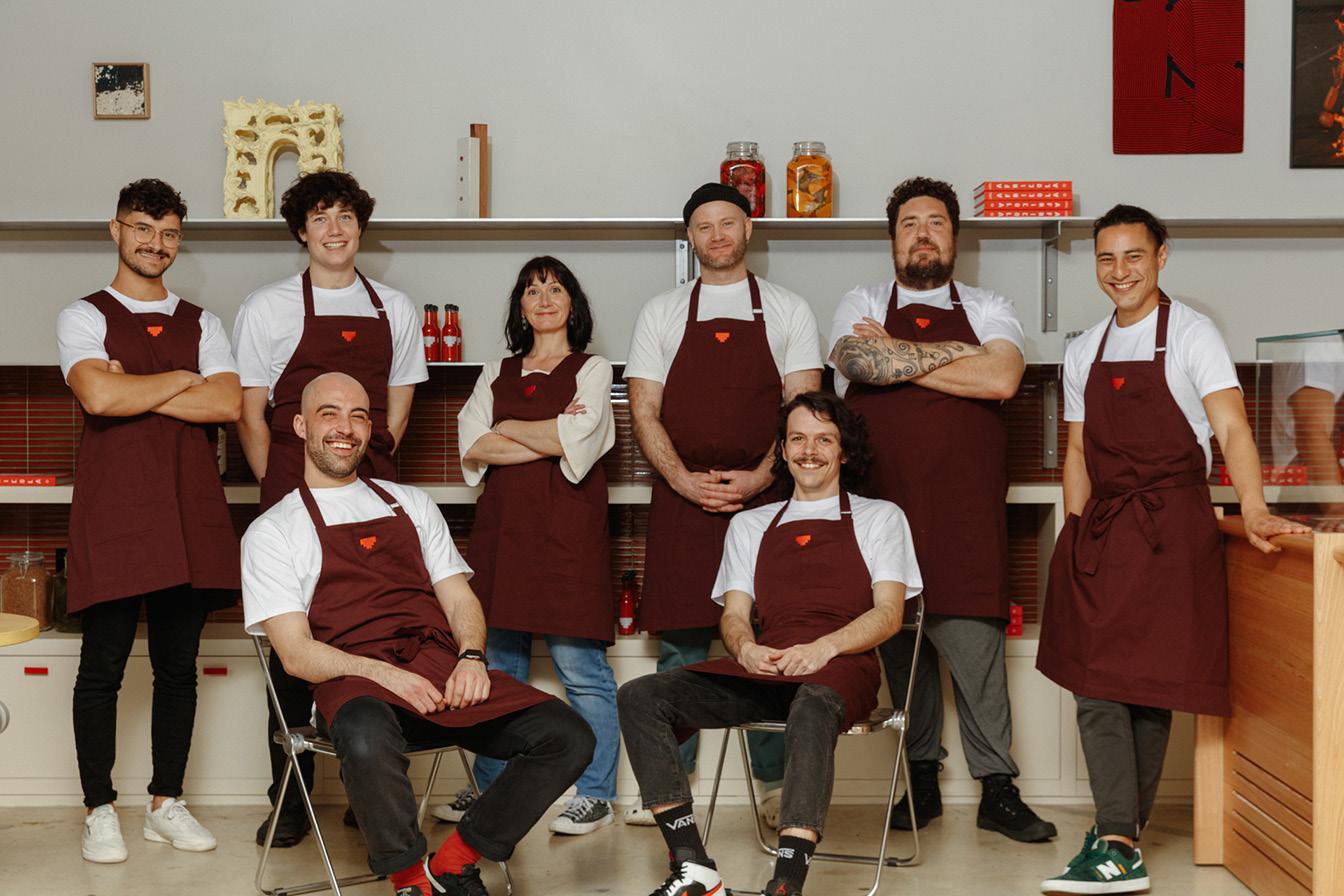
sibling venue Africola Canteen to its growing fold. The casual eatery is spearheaded by Owner Duncan Welgemoed and Head Chef Joel Tisato, who have curated a menu that features some of Africola’s most iconic dishes as well as a raft of new additions. “Canteen ups the game for casual dining and takeaway,” says Welgemoed. Visitors will find dishes that fall under two categories: salad and not salad, so expect leafy, veg-centric dishes as well as classics such as meatloaf and seasonal soups.

12 | Hospitality NEWS // Entrée
Chase Kojima takes Senpai to Burwood
Chef Chase Kojima has confirmed he will close Simulation Senpai in Sydney’s Darling Square after two years. Kojima originally launched the sashimi-centric venue during lockdown, but is now focused on expanding the Senpai Ramen brand with the help of new partner Howin Chui (Ni Hao Bar, Kowloon Café). The first Senpai Ramen opened in Chatswood, with the second set to arrive in Burwood this December. The pair plan to go all out with the Senpai brand and are planning to spearhead different stores over the coming months. senpairamen.com

Chef’s choice
Sydney Japanese fine diner Kuro has made the move from a la carte to a set menu format — two, to be exact. Executive Chef Taka Teramoto will change dishes according to produce sourced during daily trips to the markets, so diners “can be sure they are getting the very best of what’s in season”, says the chef. There are two options available ($100 and $150) which encompass shared snacks and entrées followed by an individual main and dessert. Expect Hokkaido scallop tartare; kingfish ceviche with avocado, Takuan pickles and lavosh as well as Kagoshima Wagyu sirloin carpaccio. kurosydney.com
Photography by Yusuke Oba
Pixie Italian opens in Byron Bay


Restaurateurs James Sutherland and Kim Stephen are fast expanding their portfolio with a new addition. Pixie will open in the Jonson Lane precinct in Byron Bay and focus on coastal Italian cuisine spearheaded by Chef Matteo Tine, who joins after time at Grossi Florentino in Melbourne. Local seafood will take pride of place on the menu along with savoury sfinci, vongole and house-smoked Albacore tonno pastrami. Drinks specialist Joe Jones is taking care of the cocktail list, with new- and old-world wines on offer, too. Pixie is set to open this month.
 Photography by Mia Forrest
Photography by Mia Forrest
Park life
Mega all-day restaurant Misc. has opened in Sydney’s Parramatta Park. The 300-seat indoor–outdoor venue is the work of Restaurateur Jad Nehmetallah (The Picnic Burwood) who has teamed up with Executive Chef Sebastian Geray and Menu Collaborator Joel Bennetts to bring the concept to life. Mediterranean-leaning dishes are designed to share, with highlights covering wood-fired puffy bread, squid, beef tartare, labneh, fried zucchini rounds, saganaki and king prawns. Cocktails are also on offer alongside an extensive wine list covering local and international drops from Morocco, Italy, France and Lebanon. miscparramatta.com.au
Photography by Parker Blain
November 2022 | 13 NEWS // Entrée
Sea urchin
SEA URCHIN — also known as uni in Japan — is an echinoderm that belongs to the class Echinoidea. There are more than 950 species of sea urchins that inhabit the world’s oceans, but it is estimated only 18 are considered edible.
There are three main varieties of sea urchin harvested in Australia including purple, red and green. The purple sea urchin, or Heliocidaris erythrogramma , is mostly found along Sydney’s coastline and comprises the majority of Australia’s commercial harvest.
Growth and harvest
Sea urchins are primarily harvested along the south-east coast of Australia from New South Wales to Tasmania, with the peak season occurring in autumn. Red sea urchin is harvested in Southern Queensland and along the South Coast of New South Wales and is at its best from late spring to early summer.
Sea urchins are predominantly harvested
by hand at the same time as other rockdwelling species such as abalone by specially trained divers. Divers use rake-like tools to pick up the animal from the ocean floor before they are placed in nets that are lifted to the surface with float bags. The animal is measured once it has been caught to ensure it meets the legal size threshold and is usually processed on shore.
Appearance and flavour profile
Sea urchins come in a vast spectrum of colours from purple to red and typically grow from 3cm–10cm in size, with larger species reaching up to 36cm. Most varieties weigh in at around 450g, with urchins covered in spines that are 1–3cm in length.
The seafood item is often described as an acquired taste and has an overtly briny flavour profile. Fresh sea urchins have a sweet, ocean flavour and leave an iron or zinc sensation on the tongue. They are incredibly savoury
and have a rich, creamy texture that varies according to species.
Preparation and culinary applications
Urchins can be purchased live or preboxed. Chefs can split an urchin by striking it with a knife or open it by placing two spoons inside the ‘mouth’, which should be removed and discarded after. Each urchin contains five segments that are removed by hand or with a spoon and then cleaned in salt water. The roe can be stored in salt water and should be consumed within two days if using raw or five days if the product is being cooked.
Sea urchin is primarily consumed raw, but it is also used in cooked dishes such as chawanmushi, a Japanese steamed egg custard. It’s often wrapped in nori and served as nigiri and sashimi or added to pasta dishes as seen in the Mediterranean, where it is also enjoyed with bread.

14 | Hospitality PRODUCE // Sea urchin
■
The spiny ocean creature is a sought-after delicacy.
WORDS Aristine Dobson
Only 18 species are edible
Echinoderm translates to ‘spiny skin’ in Greek
Harvested for its roe
Has a briny ocean flavour
Commonly used in Japanese cuisine
High in amino acids
Known as uni in Japan



paul@sonorafoods.com.au

“It’s also a great way to use up secondary cuts of a whole fish.” – Mitch Orr
16 | Hospitality RECIPE //
Australian barramundi
Fried barramundi with Old Bay and green tomato
Mitch Orr channels a seafood boil into a crisp fish dish.

NEWLY MINTED KILN Chef Mitch Orr joined culinary figures around the country last month to mark National Barramundi Day. Many Australians don’t know that more than half of barramundi consumed on our shores is imported, which is why it’s important for chefs and the dining public to #AskforAussieBarra to support local farmers.
Orr was inspired by the “deep south of the USA” when it came to creating the recipe for fried barramundi with Old Bay and green tomato pickle. “This is a little mix of inspiration … a little fried chicken, a little seafood boil,” says the chef. “It’s also a great way to use up secondary cuts of a whole fish. If you don’t want to use the tail or the wing, you can replace it with pieces of fillet (think popcorn chicken vibes).”
■
Ingredients
200g barramundi tail or 2 75g barramundi wings 200g cornmeal
15g Old Bay
500ml buttermilk
1 lemon 2 green tomatoes
½ bunch dill
1 bunch chives
½ bunch tarragon 100ml white vinegar
Flake salt for seasoning 20g extra-virgin olive oil 500ml vegetable oil
Pickled tomato method
1. Thinly slice green tomatoes and place in an airtight container.
2. Lightly salt tomatoes and let them sit for about five minutes until they become soft.
3. Finely chop herbs and add to tomatoes.
4. Pour over vinegar and mix well.
5. Let the pickle sit in the fridge for at least three hours to develop the flavour.
6. To serve, drain off the liquid and combine with extra-virgin olive oil.
Fish method
1. Place barramundi tail (or wings), buttermilk and Old Bay in an air-tight container. Stir well to ensure the whole fish is coated in the seasoned buttermilk.
2. Marinate in the fridge for at least three hours, ideally overnight.
3. In a separate bowl, pour in cornmeal. Coat marinated fish in cornmeal and place back in marinade. Coat fish in a second layer of cornmeal. You should end up with a gnarly and uneven crust.
4. Heat vegetable oil to 170 degrees Celsius in a heavy-bottomed pot or a Dutch oven.
5. Fry the fish for five to six minutes, continuously stirring to ensure an even golden crust.
6. Remove the fish and place it on a cake rack or a paper towel to drain excess oil.
7. Let it rest for two minutes and season with flake salt before serving with pickled tomato.
November 2022 | 17 RECIPE // Australian barramundi
Fried barramundi with Old Bay and green tomato
Bar cart
Thirst quenchers, slow sippers and all things beverage related.
 EDITED BY Annabelle Cloros
EDITED BY Annabelle Cloros
Up in the stars
Maison Mumm is sending Mumm Cordon Rouge Stellar to space. It’s the first bottle designed for out-of-this-world travel and took five years to develop. The half-glass bottle is encased in a shell made of aeronautical-grade aluminium and complies with AOC regulations. Stellar features a signature blend of Mumm Cordon Rogue (majority Pinot Noir) supplemented with reserve wines from the last five years, but the bubbles don’t rise to the surface as they do in regular Champagnes. “My goal was to retain the freshness and power of Mumm Cordon Rouge and to enhance the intensity of its aromas with more ageing and a dosage liqueur made with wines aged in oak barrels,” says Cellar Master Laurent Fresnet. Stay tuned for lift off.
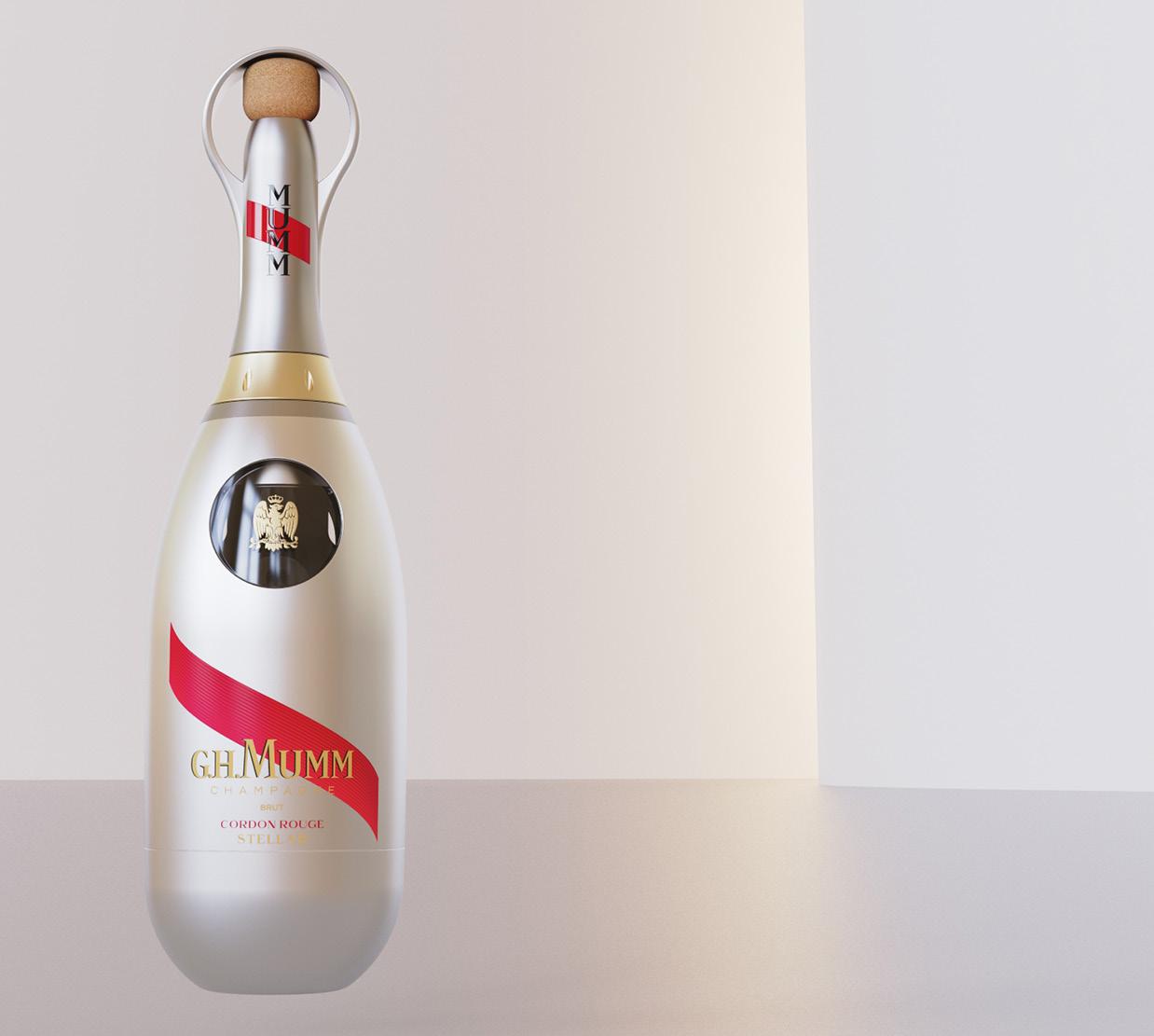
Make it a double
Pouring a martini just got a whole lot easier thanks to Four Pillars’ new release. The double gin martini is made with olive leaf and yuzu gins along with Lillet Blanc, sake, yuzu bitters and saline solution. The ready-to-drink mix offers the best of both worlds for martini drinkers who like the classic cocktail with a citrus hit and a lingering savouriness. Simply leave it in the freezer and serve with a lemon twist or a Sicilian olive (or three). $60 for 550ml. fourpillarsgin.com

Give me a mandy
Lotus Dining Group has teamed up with Big River Distilling Co. to launch its first spirit: mandarin gin. The gin is distilled with mandarin peel, Szechuan pepper, star anise, fennel, cinnamon and cloves, resulting in the perfect spirit to serve with the style of Chinese cuisine found at Lotus. “As we celebrate our 10th anniversary, we are excited to make something special that celebrates Lotus’ values,” says Beverage Manager Matthew Stewart. The gin is now being served in cocktails at Lotus restaurants in Sydney and is also sold by the bottle on Providoor. lotusdininggroup.com
Photography by Alana Dimou
Among the trees
The Trials and Exceptions series by Archie Rose has a new addition in the form of Stringybark Smoked single-malt whisky. The dram pays tribute to Australian eucalyptus trees and was distilled using seven malts (one roasted with stringybark wood) all found within New South Wales. “We felt it was really important to reimagine what an Australian smoked whisky made with native ingredients could look like,” says Master Distiller Dave Withers. “We wanted to make a whisky with a distinctively Australian voice and flavour.” There are just 2,450 bottles available for $199. archierose.com.au

Just peachy
St Leonards Vineyard has kicked off its small-batch Pilot Project with 2022 Marsie. The first release is a dry skin-contact blend made from fruit grown along the Murray River. Muscat and Marsanne were crushed before undergoing a 10-day ferment on skins. The wine was barrel-aged for three months and has notes of apricot, white peach and rose petal. Best enjoyed within a year; $32. stleonardswine.com.au

NEWS // Drinks
18 | Hospitality
2023
Renault Trafic Premium review

COVID-19 WAS A shake up for the hospitality industry, with many turning to more portable solutions due to tough lockdown restrictions. Central to this move was an increased reliance on vans to assist with moving vital supplies and services around the country.
Renault’s third-generation Trafic is one such van that has found popularity in the industry. A quiet achiever since production began in 2014, its recent facelift has included updated in-car tech and robust safety features, making it a contender for hospitality companies keen to enhance or maintain newfound portability.
CASE STUDY
Joe Rizk, barista and owner of Ravenz Mobile Café is based in the south of Sydney and feels a life on the road outweighs the costs and restraints of a brick-and-mortar business. A small business owner, he started his mobile café about nine years ago and has amassed 114,000km on his Trafic purchased in 2016. The van has proven to be a costefficient and reliable mode of transport to locations around the country, enabling Rizk to keep operating during the height of the pandemic.
With a lot of time spent in the van, Rizk had some key requirements. It needed to be reliable, economical and most importantly a great way to represent his business.
Reliability is something which Renault has focused on and continues to deliver in this latest iteration of Trafic. All variants are now powered by the 125kW/380Nm 2.0-litre diesel engine that has also
had further efficiency optimisations to drop fuel consumption. For the auto, Renault quotes an average consumption of 6.5L/100km on the combined cycle, while the manual consumes a claimed 7.2L/100km. New Trafic is covered by a five-year, 200,000km warranty that includes service intervals set for every 12 months or 30,000km, the first five services capped and up to five years of service-activated roadside assistance. The service intervals are class-leading limiting downtime, a vital attribute in the hospitality business.
In addition to being efficient, ride comfort and cabin ergonomics are good on both urban roads and highway. Despite its 1.7–1.9-tonne kerb weight, Trafic’s suspension possesses a car-like quality that doesn’t punish those spending long stints behind the wheel, with the quiet engine and the optional cabin bulkhead helping to take the edge off extended drives.
The professional and modern exterior of the vehicle is a great way to represent your business according to Rizk. “I wanted barn doors because when it’s raining, I have a cover that I had made that attaches to the roof racks to provide customers with shelter,” says the business owner. “It would have been much harder and more expensive to do something like that with lift doors — that was a big factor in why I went with the Renault Trafic. People know me from the signage; there are plenty of white vans on the roads, but they know it’s me from the customised wrap on the exterior of my Renault Trafic.”
Trafic isn’t just beauty without and bare
within. Instantly identifying this latest version of Trafic is a completely new frontend design. Ensuring it stands out with a greater presence, the new front-end styling features full LED lighting and a redesigned bumper that complements the upright grille finished with chrome detailing.
Acclaimed for its cargo space, it can take loads almost as long as its entire interior, thanks to a flip-up passthrough in the bulkhead that unlocks the space under the passenger seat for lengthy cargo — up to 4150mm in the LWB’s case or 3750mm for the SWB. New Trafic can take up to 1,280kg payload and has a 2.5-tonne towing capacity and an overall cargo bay volume of 6.7m3 on the LWB variant. Up to 16 tiedown points are available, providing ample options for securing a load.
“It was the way the van was designed that influenced my decision to buy a Trafic,” adds Rizk. “I needed a van with twin side doors and rear barn doors and I liked the Renault because the interior design gave me plenty of space to fit it out as a coffee van. It has a generator, a coffee machine, 100L of water and a fridge.”
It is the reliable, cost-effective and quality nature of Trafic that makes it the best choice for hospitality companies. It is easily one of the best to drive and live with, and for many hospitality businesses, investing in a van can be a practical way to maintain or enhance future or current business opportunities.
■
New Trafic is available to order now priced from $48,200 plus on-road costs. For more information or to find your nearest dealer, visit renault.com.au/vehicles/trafic
November 2022 | 19 ADVERTORIAL // Renault
Is the new Trafic the optimal hospitality vehicle?
Through the vines
Greece has been producing wine for millennia, and is finally sharing the fruits of its labour.
 WORDS Aristine Dobson
WORDS Aristine Dobson
DRINKS // Greek wine
20 | Hospitality
FRANCE, ITALY, AUSTRALIA, the US and Spain dominate the global winemaking industry. But other countries with thousands of years of wine-making experience are fast ascending the ranks. Greece is one of them, and also happens to be one of the oldest wine-producing nations in the world.

Greece’s natural landscape is home to a range of varietals that have long been cultivated to make some of the most interesting wines on the market. They have largely been enjoyed by locals, but Greek winemakers are now looking to share their wines with the world.
Hospitality speaks to Konstantinos Lazarakis from the Wines & Spirits Professional Center and Federica Lazaridou from the Nico Lazaridi winery about Greek varietals, cultivation and vinification processes and the current challenges of exporting Greek wine.
Winemaking has a lengthy history in Greece going back six millennia. Ancient Greek civilisations were instrumental in pioneering new methods of viticulture and vinification, making the country a central wine hub. The ’50s saw a rise in people trying their hand at winemaking, using grapes grown in their own backyards to produce wine for home consumption as well as for local tavernas.
Bottled wine did not become prevalent until the turn of the century when a number of brands emerged that considered packaging, shelf life and the commercial potential of Greek wines, which are now competing against global giants.
Konstantinos Lazarakis has been dubbed ‘the master of Greek wine’ and is the president of the Wines & Spirits Professional Center in Athens. He published his first book The Wines of Greece in 2005 and has a deep understanding of Greek wine culture. “In the ’80s and ’90s, producers turned into smaller ventures, focusing on premium wines,” he says. “Boutique-image wine production was immensely helped by the revolution of ontrade restaurants in Greece.”
Wine has long been an integral part of Greek culture, but the local industry is often overlooked in the international market. “We are an intriguing mix of being very old and very young at the same time,” says Lazarakis. “We have adopted a lot of grape varieties and very interesting styles of wine, but we’re still learning and are largely unexplored … maybe not seen by wine lovers around the world.”
There are more than 1,000 wineries operating across Greece including Nico Lazaridi. Head Oenologist Federica Lazaridou says the country’s diverse natural environment is ideal for winemaking. “Greece goes from Thrace
down to Crete and wine is produced in all these regions, so there are different climates and soils,” says Lazaridou.
Greece is widely regarded for its white wines, but also makes different reds and Rosés, which have increased in popularity over the years. “We produce around 60 per cent white wine, 10 per cent Rosé and the rest is red wine,” says Lazaridou. “We go from fresh, fruity and refreshing whites to old, well-structured reds.”
The grapes cultivated across Greece include common varieties such as Merlot, Syrah, Sauvignon Blanc and Sémillon. Wineries are also utilising lesser-known indigenous grapes. “We have more than 300 [indigenous] grape varieties currently [in production] or being researched,” says Lazarakis. “We have amazing luck these varieties are endemic and you cannot find them anywhere else.”
Lazarakis names Assyrtiko as one of the most common crops grown in the country. “The clear leaders are the wines coming from the volcanic Aegean Sea island of Santorini and the grape variety is called Assyrtiko,” he says. “It’s the first grape variety of Greece that could be called ‘international’.”
Nico Lazaridi have two vineyards located in Kavala and Drama, each focusing on different styles of wine. “In the area of
November 2022 | 21 DRINKS // Greek wine
“We go from fresh, fruity and refreshing whites to old, well-structured reds.”
Federica Lazaridou
Kavala, we produce fresh, fruity white wines with lower alcohol and higher acidity because it’s closer to the sea,” says Lazaridou. “Drama is more suited to well-structured white wines and long-ageing red ones.”
The winery is looking to expand its portfolio to include indigenous grapes, but it has been a journey of trial and error. “Many varieties are found in other parts of Greece,” says Lazaridou. “Drama and Kavala are very young; they only started making wine in the last 35 to 40 years, so we don’t have a [specific] variety from the area. At Nico Lazaridi, we are trying to find some varieties suitable to our climate.”
Mavroudi is a red grape grown along the Greek-Bulgarian border that flourishes on the vineyard. Other indigenous grapes are also succeeding as the winery continues to expand its crops. “We are very satisfied with Assyrtiko and Malagousia,” says Lazaridou. “Another variety we are working on but not cultivating is Xinomavro. We buy the grapes from Naousa because they are from the area.”
Nico Lazaridi currently produces 22 different labels including the award-winning Black Sheep range, which consists of red, white and Rosé. “The white is a blend of Sauvignon Blanc and Sémillon from Kavala,” says Lazaridou. “It’s fresh, easy and fruity and it doesn’t need to be paired with food. The red wine is a blend of Syrah and Merlot, and the Rosé is Syrah and Xinomavro.”
The winery makes wines from entry-level labels to premium-quality bottles, but each have their own unique characteristics and vinification methods depending on the style. “We have protocols for fresh whites and we have a different
one for [wines] aged in oak, which generally stay at the winery a little bit longer,” says Lazaridou. “It’s based on the area where we’re harvesting, the variety and what we’re planning to do with the different wines.”
Grape variety is also a core consideration, with methods altered depending on the fruit. “If you press red grapes, you get white juice like the famous Blanc De Noir, which is a white wine that comes from black grapes,” says Lazaridou. “The main difference in white and red wine vinification is that we need contact with the skin of the red grapes to extract the colour and the tannins.”
Controlling the temperature during the process is also integral when it comes to the extraction and fermentation of the wines. “The alcoholic fermentation for white wines is usually done at lower temperatures with a maximum of 16–17 degrees Celsius,” says Lazaridou. “The red wines start from 22 and go up to 28–29 degrees Celsius.”
Although Greek wine is rising in popularity, the country still has a long way to go when it comes to production. “People believe Greece is up there with Spain, Italy or France, but you have to keep in mind we’re talking about a country that makes less than half of what Bordeaux produces in a year,” says Lazarakis.
Lazarakis hopes exportation numbers will increase in the near future. “We are a smallproducing country, and we enjoy drinking our own wine, so we export less than 20 per cent,” he says. “We have a very peculiar situation: a lot of Greek producers don’t have to export because they can sell everything from their winery in their own backyard.”
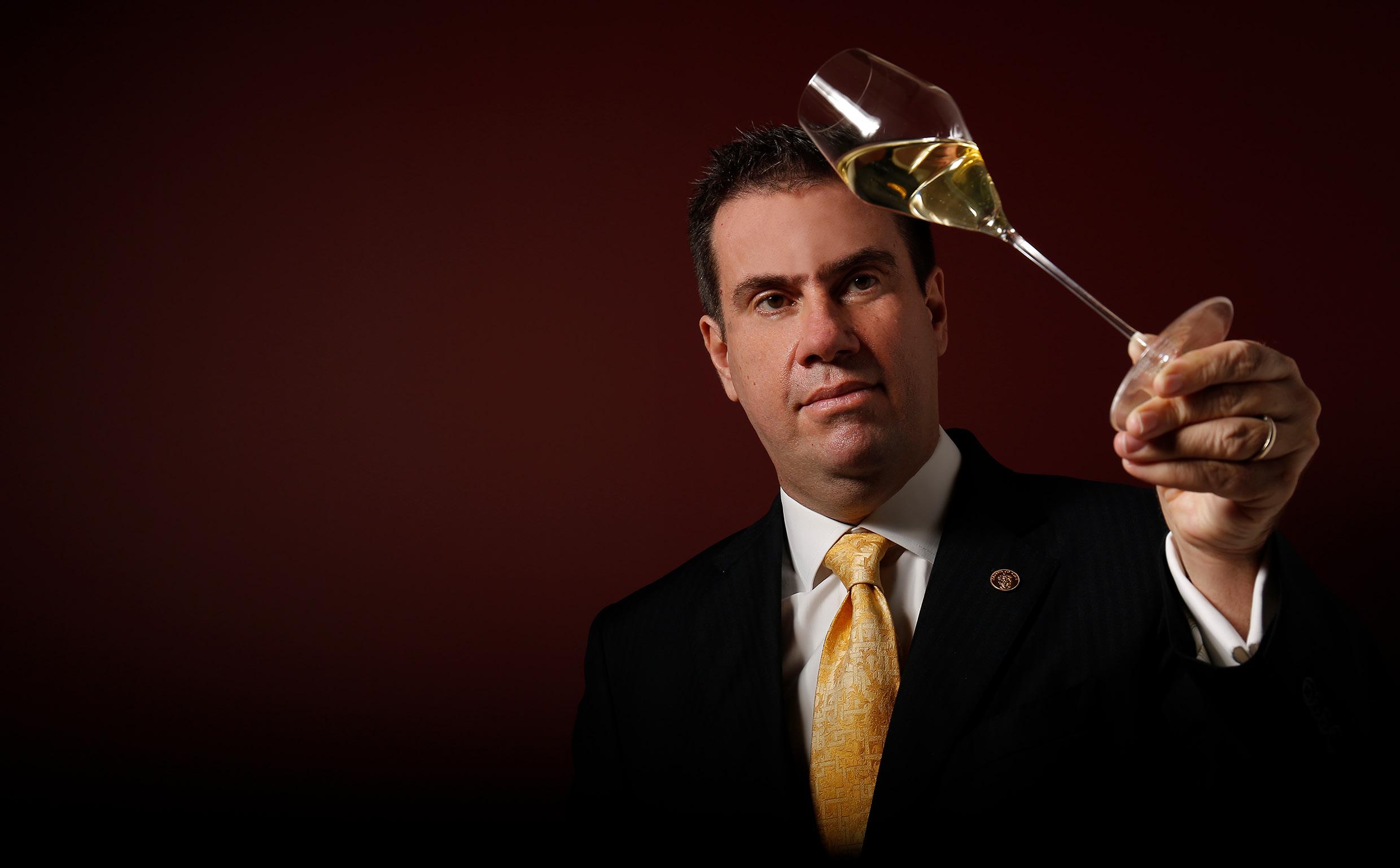
22 | Hospitality
“We have adopted a lot of grape varieties and very interesting styles of wine, but we’re still learning.” Konstantinos Lazarakis
DRINKS //
Greek wine

Available at LYRES.COm.au CELEBRATING UNFORGeTTABLE MOMENTS? MAKE IT A LYRE’S.
wine










Numbers aside, there have been some positive improvements when it comes to the promotion and production of Greek wines. “We’re seeing some developments and more people are willing to try different wines from other countries,” says Lazarakis.

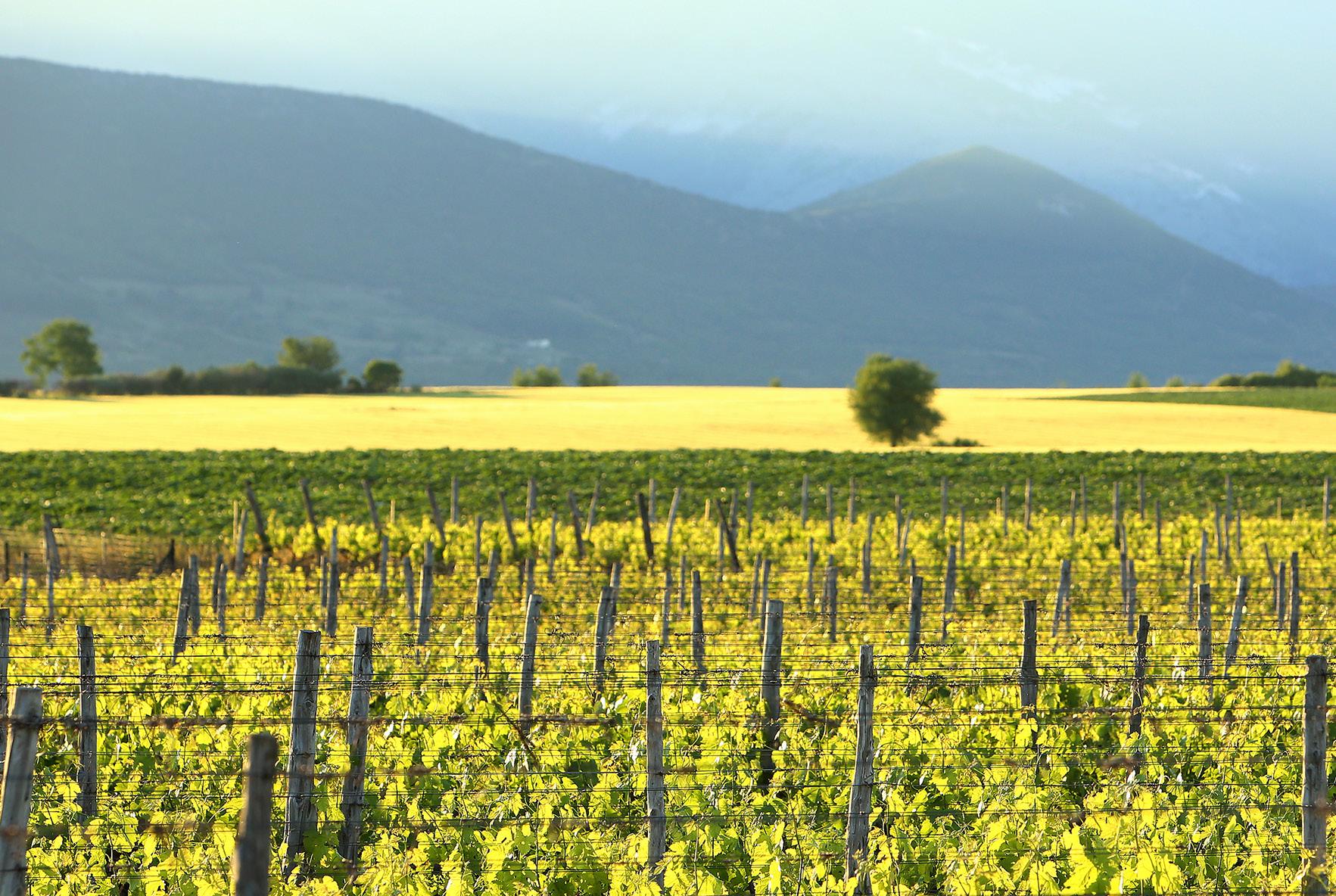
The progression and innovation of higher-quality wines has changed the sector considerably in recent years. “Greek wines had a very bad reputation 25–30 years ago in the international market because the wines were low quality,” says Lazaridou. “But they started to gain a better reputation thanks to their white and red wines.”
The rise of Greek restaurants and eateries has also encouraged the public to try Greek wines for themselves. “Greek and Mediterranean gastronomy in the international market is improving, and it means more sales for Greek wines,” says Lazaridou. “Wineries are focusing more on new technologies and better blends and are also investing in promotional events and expos so other countries can get to know Greek wine.”
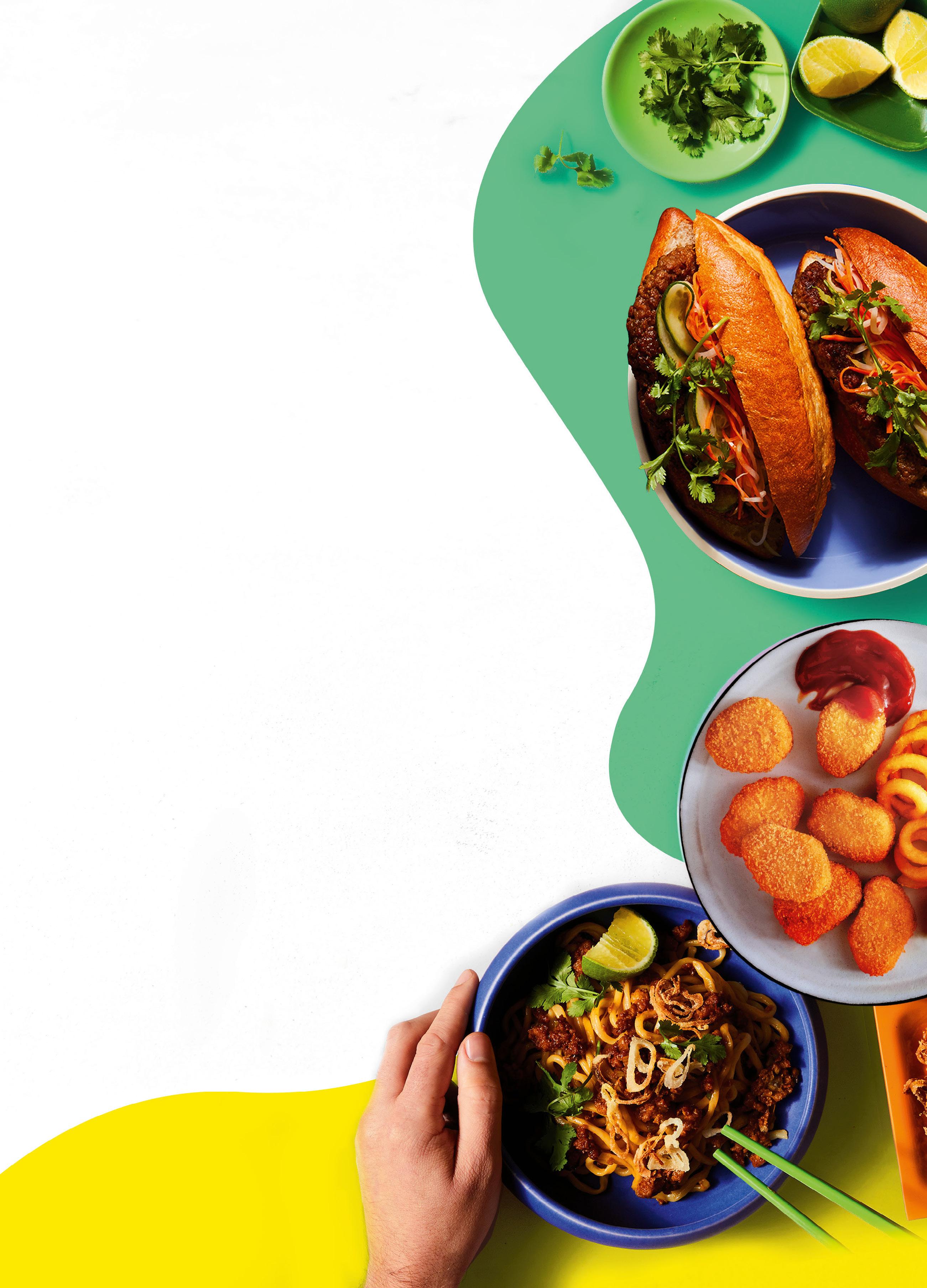
Exporting to Australia has come with its challenges for Nico Lazaridi as the country already has a strong local market. The winery has executed various strategies to communicate with the hospitality sector and its customers. “You have to focus on educating consumers, importers and distributors,” says Lazaridou. “The Greek community has a lot of restaurants in cities promoting Greek wine.”
Producers have harnessed their expertise and skills to deliver wines that reflect Greece’s diverse landscape. Lazarakis believes the industry will continue to thrive if recent times are anything to go by. “The whole idea is getting out, meeting key professionals, hosting masterclasses and doing promotional work which allows the product to speak for itself,” he says. “You have to make people taste the wines — they are unbelievable, truly different and are wines everyone would enjoy.”

24 | Hospitality DRINKS // Greek
■
Greece is the 17th-largest producer of wine in the world
Xinomavro is mainly cultivated in the city of Naousa
Nico Lazaridi will release single varietals made from indigenous grapes
The Black Sheep range is made in Kavala

TRY IT FOR YOURSELF! IMPOSSIBLEFOODS.COM Impossible™ Beef Mince Impossible™ Beef Patties Impossible™ Pork Mince Impossible™ Chicken Nuggets M a d e From Impossible™ChickenNuggets MadeFromImpossible™ Beef MadeFromImpossible™Pork MEAT MADE FROM PLANTS . Impossible Foods is now available in Australia. Scan to get a complementary sample today!
Moonah
A 12-seat restaurant sustained by the chef’s garden and his vision to do things his own way.
 WORDS Annabelle Cloros PHOTOGRAPHY Marnie Hawson
WORDS Annabelle Cloros PHOTOGRAPHY Marnie Hawson
PROFILE // Moonah 26 | Hospitality
A MOONAH IS a native coastal tea tree that grows along dunes and grasslands. It’s also the name of Tobin Kent’s 12-seat restaurant found at the Minya Vineyard & Winery located in the wetlands of Connewarre in Geelong, Victoria. When Kent made the move from chef to business owner, he was adamant his restaurant would let the produce speak for itself. Moonah would never be fussy or put up dishes too perfect to eat. Instead, each plate would connect the diner to the ingredient, most likely grown in Kent’s own backyard.
The chef has worked in the kitchens of Attica and Brae (as well as a seaside stint at a restaurant in Apollo Bay), and culminated his experiences to become the lifeforce of Moonah — a hidden gem found down a long dirt road.
Kent speaks to Hospitality about sustaining the restaurant with fruit and veg grown on his own land, why 12 was the magic number of seats and how the kitchen is doing things differently.

Tobin Kent started taking cooking seriously at the age of 18 — it also marked the time he decided to give gardening a go. Tomatoes were planted in a one-metre-square garden bed, which led to experiments with growing methods and inevitably cooking techniques. The chef completed his apprenticeship in Geelong, going on to stage at Nahm in Bangkok, Attica in Melbourne and the Royal Mail Hotel in Dunkeld, which turned into a permanent position as a commis chef.
He was offered a role at Dan Hunter’s then soon-to-launch restaurant Brae, where Kent spent two years before he moved on to Gladioli and later La Bimba in Apollo Bay. It was here at the casual eatery where the pieces fell into place. “I came to an understanding about what kind of restaurant I wanted to open — it had to be creative and contemporary,” says the chef. “I started looking for venues and came across Minya Winery, which had the perfect rustic farmhouse.”
The location went hand in hand with Kent’s vision for Moonah. “I had been sourcing lots of second-hand furniture, antiques and vintage pieces to showcase the rural heritage of the area and it reflected our theme,” he says. Moonah would take over what was once a cellar door and events space overlooking a billabong surrounded by its namesake trees. “When you arrive at Minya,
November 2022 | 27 PROFILE
// Moonah
“I came to an understanding about what kind of restaurant I wanted to open it had to be creative and contemporary.”
– Tobin Kent
there is a long road and there’s no traffic or houses — it’s really tranquil and peaceful.”
Some of Australia’s most iconic and successful restaurants are in rural areas, but Kent didn’t want Moonah to be like any other high-end fine diner off the beaten track. The restaurant has taken a more challenging path, but it’s one that’s undisputedly more rewarding. While 12 seats is small, it’s a number of necessity. “My first idea was to have a 16-seat restaurant, but I understood the difficulty of getting staff to work with us, especially in a rural area,” says Kent. “A restaurant can’t reach its potential without staff, but if you only have 12 seats, a handful of staff is more than enough to get you through. We also wanted to take the time to meet and interact with customers because it’s one of the most enjoyable aspects of fine dining. We would be too busy if we had more guests and wouldn’t be able to offer that experience.”
The number is also closely tied to a non-negotiable for Kent: sustaining the restaurant with its own produce. 95 per cent of Moonah’s fresh fruit and vegetables are grown across 1.5 acres on Kent’s property, which he lives on with his partner. “I didn’t want to compromise on that,” he says. “I didn’t want to start purchasing things from the market because it would drop the quality of our offering straight away. We grow everything ourselves because the quality of the food you can create all comes down to the produce. As a gardener, I can see the way we grow things gives us much higher-quality produce than what you can buy at the market, so all our fruit and vegetables come from our farm, our friends farms or the wild — there’s a lot of foraging involved.”
It’s a model exemplified by Brae, which served as a pivotal experience for Kent during his time at the fine diner. “I worked with Dan Hunter for eight years and there is a lot of integrity in his kitchen,” he says. “Being able to understand the quality of a product — you don’t see that heightened level in other kitchens. Even cooking a spear of asparagus … the result is completely different to anywhere else. It was a big eye-opener for me applying that [approach] to every element in the kitchen and doing things the hard way. Working in the garden also made me realise it was the way I wanted to work as well.”
The chef spent the last 12 years trialling different


PROFILE // Moonah 28 | Hospitality


gardening approaches and researching alternate philosophies before settling on natural and dryland farming practices, which are applied across a berry garden, fruit orchard and vegetable patch. While it’s perhaps not the most common way to grow food, Kent is sticking to his guns. “I have finally stumbled upon a philosophy I’m happy with; I am the kind of person who doesn’t really follow what others are doing,” he says. “I want to go in another direction and do something different. Other growers rely on volume, which is related to income, but we aren’t looking for that — we want high-quality produce that goes directly on the plate and is served to the customer.”
A week at Moonah begins on Thursday with a day of prep; a must for the model to gel. You see, Moonah is open for lunch and dinner service Friday to Sunday, with staff working four days a week. “It provides lifestyle balance, and I can get onto the farm and spend time doing things there,” says Kent. “Our staff really enjoy having three days off and are happy to do longer days to have more time off.”
The set menu is a central cog in the Moonah wheel, with the team able to prepare each and every dish for the week’s six services without any waste. “We know exactly how much each guest is spending on food, therefore we can budget and control costs,” says Kent.

So, what can one expect from a Moonah menu? There will always be eight courses served over three hours, with plenty of attention paid to vegetables as well as proteins sourced from small-scale farmers. “Basically, the dishes are dictated by what we grow as well as the meat and seafood we source,” says Kent. “We are going down a rustic fine dining path where we want the food
to look good, but it also has to be delicious and not over the top. We step back and let the ingredients speak for themselves and we use things that might not be trendy or popular. We are focused on using wild, sustainable seafood and under-utilised products from fishermen such as blue-throated wrasse, which isn’t that common.” The fish has recently been served with young garlic and a sauce made with crayfish and citrus.
Treating ingredients with respect is a must, especially those that are grown with the utmost care and consideration. Preserving the natural flavours of produce is also integral, which is where technique and experience comes into play. Kent has developed a method of cooking that’s essentially a combination of steaming, sautéing and blanching — but there’s no water involved. “If you blanch asparagus and put it in an ice bath, the flavour and nutrients [leaks] out into the water,” says the chef. “The flavour profile changes. But sweating a vegetable in a saucepan with high sides means you are essentially blanching it in its own liquid. A bit of steam is trapped in the pan and there’s no water added, so the flavour isn’t diluted in any way. When you taste the vegetable, the integrity remains.”
A vegetarian course using pumpkin seeds is another example of Moonah’s minimal-waste approach. “It has been really popular, and customers enjoy it as much as any other dish on the menu, which is really satisfying for me,” says Kent. Pumpkin seeds are

30 | Hospitality
PROFILE // Moonah
“We grow everything ourselves because the quality of the food you can create all comes down to the produce.”
– Tobin Kent
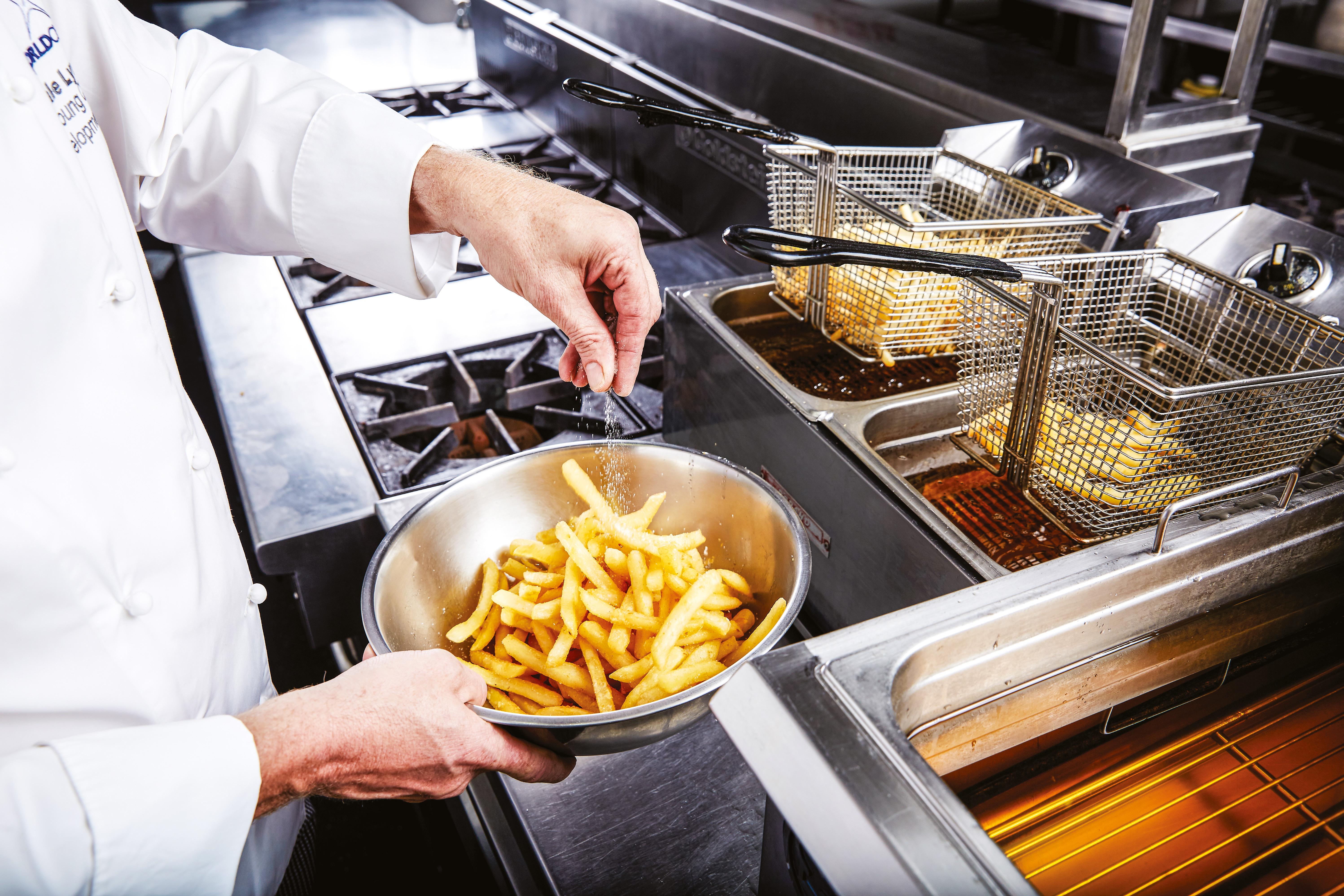

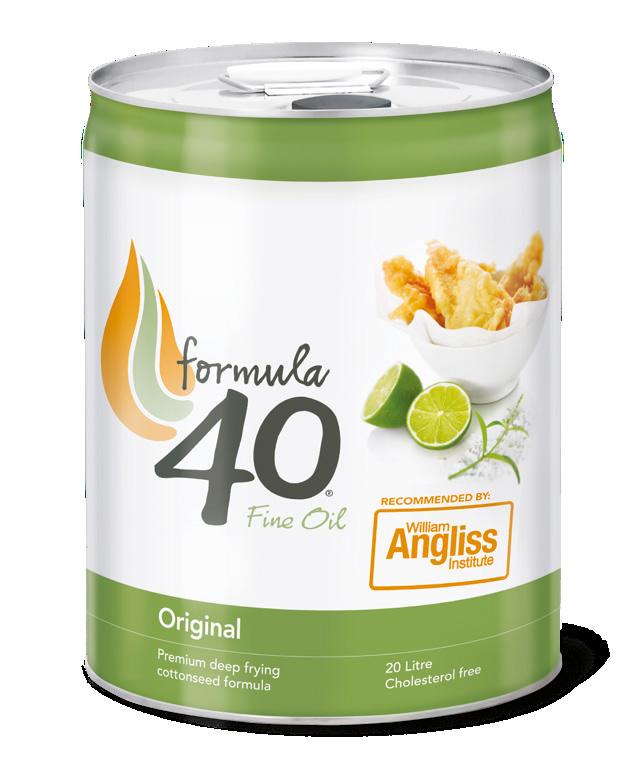



dried and fermented before they are made into a crumble and teamed with seasonal vegetables and goat’s cheese. “It depends on what is in its prime on the day, but we have been using baby radishes, asparagus and a lot of herbs. We top it with a dressing made from reduced whey from the cheesemaker, which is a byproduct.”
When you are both the producer and the chef, obstacles are bound to arise. But they often present an opportunity for teams to innovate and think quick. “In regional areas, you only have access to what’s around you, which can be limited,” says Kent. “But if you’re limited, you have to be more creative, and it pushes you.”
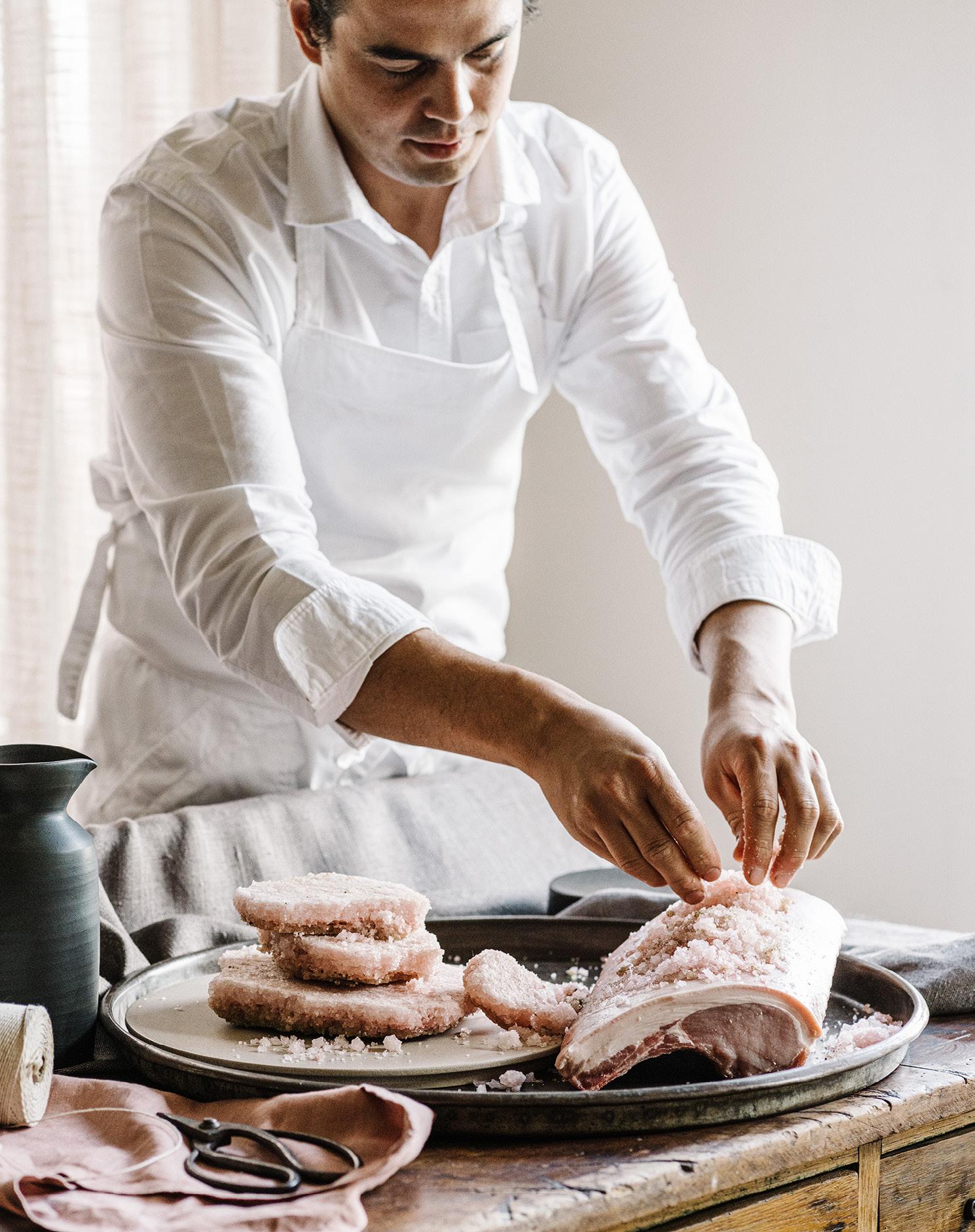
The chef references a duck course on one of Moonah’s early menus that yielded a positive outcome with a long-lasting impact. “I had used all the vegetables from the farm on other dishes, so I went outside to the wetlands and started foraging coastal succulents and used them as the side for the main,” he says. “It was received really well, and the dish stayed the same for the next six months.”
Wine is naturally a big part of the dining experience, and Kent selects each drop served at the restaurant and curates the wine pairing. Moonah’s cellar is decked out with wines from Australian makers, with many bottles made in line with minimal-intervention practices. “We have quite a few natural wines and we look for
people who share similar philosophies to us,” he says.

While it’s far from basic, the chef says Moonah’s food is purposefully pared back to ensure a harmonious dining experience. “The food is simple in some ways because the main intention is for it to go with drinks,” he says. “If you have wine with a dish that’s overcomplicated, it’s almost too much and you can’t focus on the detail.”
Moonah has been open for just over two years now, and the 12-seater has largely flown under the radar since its launch. The restaurant is unassuming in many ways — there are no menus published on its website or lengthy accounts about the dining experience to trawl through online. And that’s a good thing. “We don’t want too much hype or attention — we want people to come in and be pleasantly surprised,” says Kent. “We are doing things differently and in the way we believe is right. In doing so, you aren’t recognised as quickly, but we are on our own path.”
Each of the 12 guests who attend lunch or dinner at Moonah play a pivotal role in the restaurant’s viability and contribute to the big picture, while it quietly gets on with doing things at its own pace. “People feel connected when they come here,” says Kent, “and that’s a great thing for a diner.” ■
32 | Hospitality
The restaurant sources wild and sustainable seafood
Moonah grows all its produce except onions and potatoes
Bookings open on a monthly basis
Momento Mori’s Fistful of Flowers is on the wine menu
PROFILE // Moonah




T H E H O M E O F M A R A N A A U S T R A L I A N O W O P E N 4 / 4 J U L L I A N C L O S E , B A N K S M E A D O W N S W 2 0 1 9 M A R A N A A U S T R A L I A . C O M . A U - 1 8 0 0 M A R A N A ITALiAN EXCELLENCE iN THE PiZZA AND BAKERY iNDUSTRY
 FEATURE // Hard kombucha
FEATURE // Hard kombucha
34 | Hospitality
Hit refresh
WORDS Annabelle Cloros
THE NORTHERN RIVERS region in New South Wales is known for its vast sands and lush rainforests, making it an ideal home base for Ventura Brewing — one of Australia’s first hard kombucha brands. Co-Founders Shanu Walsh and Dom Hurley set up the brewery in Murwillumbah where everything “tastes better when it’s made in paradise”.
They say you can’t argue with logic, and the same can be said for being an early adaptor of trends. The US has always been a nucleus of forward-thinking products, with the emergence of beverages that incorporate a ‘wellness’ angle skyrocketing in popularity.
Walsh and Hurley first tried hard kombucha during a trip to the States and thought they’d give it a crack in a “brew cave” when they returned home. Pilot batches soon turned into something much bigger — a core range, seasonal specials and the country’s first alcoholic kombucha taproom set to launch in the coming months.
Hospitality speaks to Walsh about brewing hard kombucha, twisting familiar flavour profiles and the heights he hopes the sessionable drink will reach.
Kombucha has been around for thousands of years, but the product has no doubt experienced a massive surge in popularity recently. The beverage is made with a base of tea, typically green or black (or both), combined with sugar and a SCOBY (symbiotic colony of bacteria). The batch is left to ferment, with each successful run

resulting in a new SCOBY forming on top of the liquid.
The global kombucha industry is estimated to be worth more than $16 billion by 2027, which means there’s huge potential for kombuchaaffiliated products. Combining alcohol with mixers is nothing new — green tea and Hennessy, vodka cranberry, gin and tonic, rum and Coke — but the prolific boom of hard seltzer (sparkling water) has seen the emergence of a new category that forgoes sugar and is accessible to a wide consumer base.
Kombucha has been linked to a range of health benefits related to digestion, energy, immunity and energy, but Ventura doesn’t promote its products as being healthy as they contain alcohol, which is said to damage or eliminate the probiotics found in kombucha. “There are a lot of good acids produced by the bacteria in kombucha, but we steer away from claiming it as a healthy drink because it has alcohol in it,” says Walsh. “It’s a tricky path to go down saying hard kombucha is a healthy beverage. But it is low-sugar, gluten-free and low-calorie compared to other products on the market.”
Hard lemonade, hard punch, hard tea, hard coffee and of course hard kombucha are all on the up, and US brewers are leading the way. “Dom and I spent a bit of time travelling in America and we fell in love with the industry,” says Walsh. “When we went there, the craft beer industry was 10 years ahead of us and
November 2022 | 35 FEATURE // Hard kombucha
We’re calling it hard kombucha is the drink to watch this summer.
Whole pressed yuzu is imported from Japan
Watermelon and mint was one of Ventura’s debut flavours

we foresaw the same thing happening with hard kombucha. We saw the emergence of hard kombucha in its infancy and we thought we were lacking an option here that was craft-brewed. So, we went to work brewing downstairs at my place in Cabarita Beach and we thought we would go ahead and commercialise it in late 2018.”
It would take two years for Walsh and Hurley to develop Ventura’s hard kombucha recipes, with the pair mostly relying on their own intuitions to perfect the hard kombucha they set out to create from the start. “It was difficult because it was such a new field; there was no playbook so to speak on how to do it,” says Walsh. “All the breweries in the States kept their cards close to their chests in regards to how they were producing it.” While the formulations continued to progress in Walsh’s garage, a bespoke brewery was in the works, which is where Ventura is now based.

The kombucha is left to ferment for around two weeks before it’s moved to a unitank (two 1,500L tanks combined), which is where the alcohol volume is scaled up. “We pitch it with brewer’s yeast and raise the alcohol volume from there,” says Walsh. “The kombucha comes in at 0.3–0.5 per cent, so we brew another 4.5 to 5 per cent depending on the flavour we’re making. We never wanted to backfill it with vodka or ethanol, we do it the craft brew way, which is why we do a double fermentation.”
The drinks sit around 5 per cent ABV
Can be teamed with spirits to make cocktails
Ventura’s brewing process mostly follows the same steps, with slight alterations made according to the flavour in production. But it all starts with a batch of kombucha. “We use premium teas and it’s essentially the same recipe to make the base,” says Walsh. “It’s a combination of 50/50 black tea and green tea, which we source from China and Sri Lanka. We brew a batch which is about 1,000 litres.” Cultures and sugars are then added to the tea which is brewed in custom tanks with open tops. “We aerate it and keep it circulating to allow the bacteria to thrive. A 1.2m pellicle forms on top of each batch.”
The secondary fermentation coincides with the addition of juices, herbs and botanicals, which can also be added pre-ferment, depending on the flavour. Ventura’s core range currently spans elderflower and cucumber, hibiscus and rosemary and ginger and yuzu, which is made with cold-pressed ginger juice and yuzu sourced from Japan. “We add the ginger juice at the end to keep it tasting fresh and then we cool it, carbonate it and package it,” says Walsh. “We like doing more unique flavours to spark some interest and that have a point of difference. We look for flavour combinations people like and twist them.”
The brewery also makes seasonal flavours, which have seen limited releases of hard kombuchas including lavender lemonade, subtropical hops, peach and sage, spiced apple and pear and an entirely new product — moonshine kombucha. “As far as I know, Goodtime Moonshine is the world’s first hard kombucha spirit,” says Walsh. “It was a collaboration we did with local distiller Keri [Algar] from Cabarita Spirits and it bursts with floral notes of elderflower and hibiscus and is finished off with subtle yuzu elements.”
36 | Hospitality FEATURE //
Hard kombucha
“We never wanted to backfill it with vodka or ethanol, we want to do it the craft brew way, which is why we do a double fermentation.”
– Shanu Walsh
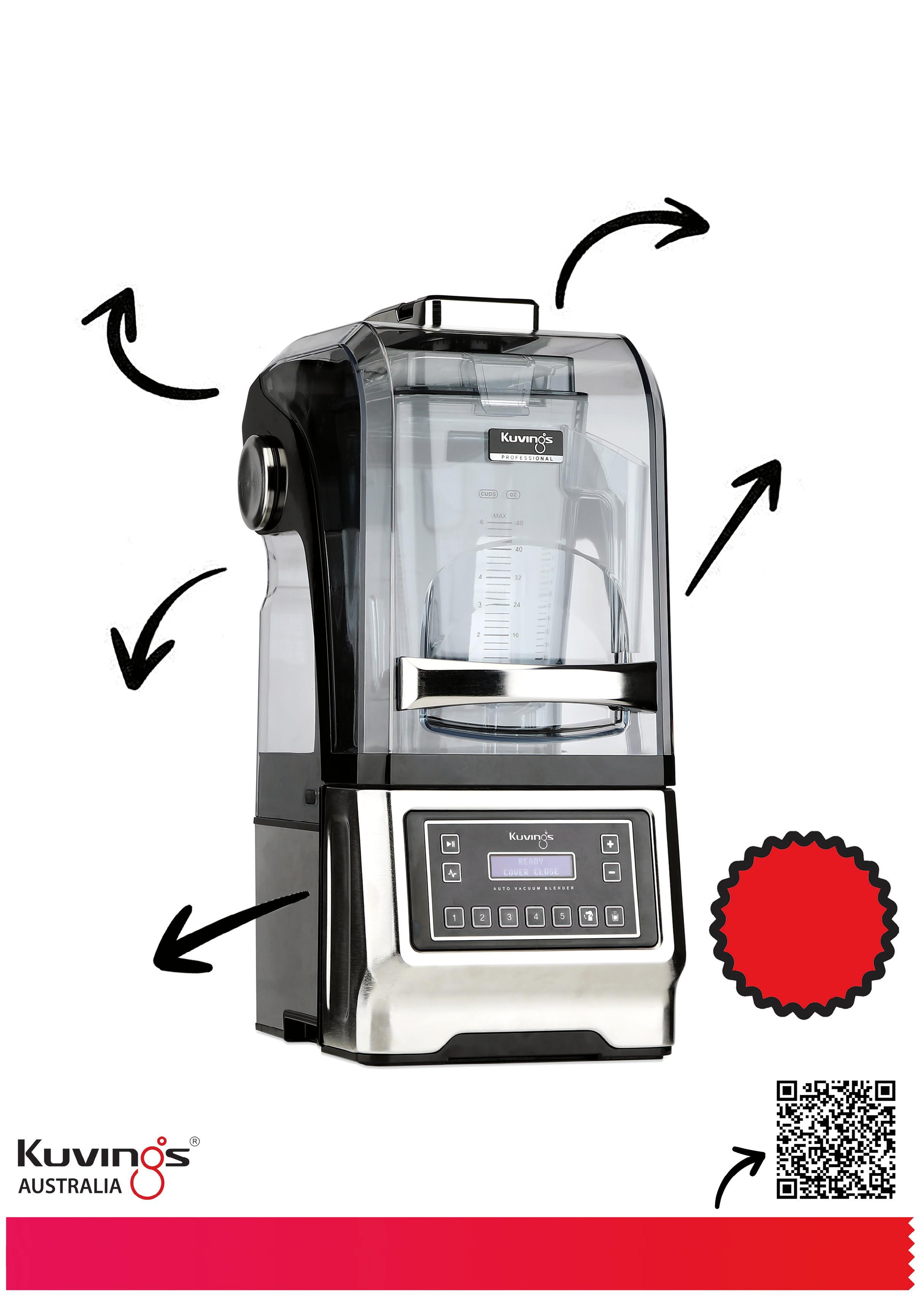

For those who haven’t tried hard kombucha before, it can be described a little like this: “It’s not quite as complicated as wine and not as sweet as cider,” says Walsh. “It’s a nice, clean, refreshing and slightly tart beverage which is easy drinking. It’s effervescent like a sparkling wine and gives us a good base to play around with some interesting flavours.”
Hard kombucha is an RTD product that’s designed to chill and serve as is, but it can also be used as a mixer for those who want to up the alcohol content or try out a cocktail. Ventura’s hibiscus and rose is currently used in a cocktail at The Burrow in Cabarita Beach, with Walsh encouraging people to try different spirits and garnishes with the beverage. “Even some rosemary sprigs or a slice of fresh cucumber,” says the brewer.

The brand will soon launch a new addition to its range — watermelon and mint, which was one of its very first flavours. “We did it for a New Year’s party and everyone loved it,” says Walsh. “It’s really refreshing for the summer months, so it’s coming back.” A mid-strength option is also in the works. “The low-alc market is becoming larger and people are drinking less, but we want to cater to those who still want to have a drink and reduce the volume down.”
Ventura’s hard kombucha range fits into an emerging category in Australia which is playing catch up to an industry that has well and truly kicked off in the US. But taking a slow and considered approach goes a long way when it comes to cementing a brand with staying power, and Ventura is committed to doing things the right way. “Hard kombucha has a few years to go and it’s such a new and novel product in the Australian market,” says Walsh. “We were one of the first in Australia to start doing it the way we are, and we have a ways to go when it comes to educating people about the product, getting them to taste it and to eventually start picking it up, but we find people have a lot of interest in it. It’s early days for us and we are expanding and getting on the road, but the feedback has been good so far. We would love to see ourselves Australia-wide and get people more familiar with the product.”

Walsh and Hurley will soon open the doors to a taproom at the Murwillumbah brewery and are keen to welcome visitors and share the story behind a drink that’s a little bit different. Being the first can be daunting, but rewarding, and the results can be sweet — or aromatic, refreshing and crisp in this case. ■

38 | Hospitality FEATURE // Hard kombucha
“We saw the emergence of hard kombucha in its infancy and we thought we were lacking an option here that was craft-brewed.” Shanu Walsh
Aussie hospitality businesses get caught by regulatory risk
Management liability insurance can help cover your business.
WHILE MANY IN the hospitality industry are living their dream of running their own café or restaurant, they may want to be wary of the regulations that allow them to operate.

In recent months, the hospitality industry’s regulatory landscape has drastically changed.
From superannuation hikes to changes to the annualised wage arrangements for hospitality workers, the changes are designed to better represent hospitality employees across the sector.
For many across the industry, the changes are a positive step forward. However, they do increase the risk for small business owners, who are now dealing with increased liability if things get missed.
This article will explain the risks in detail and show how small business owners in the hospitality sector could be protected by management liability (ML) insurance
Know when you’re responsible as a business owner
There have been countless examples of small hospitality businesses breaching the regulations that govern them.
From Darwin workers being back-paid nearly $400k to a Queensland bakery failing to act on a compliance notice and similar offences by a Barossa Valley pizza operator, hospitality business owners are getting in trouble across the country.
While these are isolated incidents, it shows employers must be vigilant to meet their obligations. There is no guarantee that a technicality or lax accounting won’t land you in an expensive and stressful legal proceeding.
What a management liability policy can cover
A management liability* policy is designed to cover a variety of situations that could occur when running your business including OH&S issues, unfair dismissal, sexual harassment and defamation.
ML policies can also be tailored to your business needs, depending on the risks you face.
For example, you could get employment practices liability* to cover you from claims made by employees about their employment conditions or breaches of employment laws.
Generally, ML policies are designed to cover the damages and claimant costs awarded against the insured business as well as legal, defence and claims investigation costs. It also covers some civil fines and penalties.
With hospitality businesses facing hefty penalties, there is a need to protect your business. Many will find it’s not worth risking their business over regulatory mistakes.
Fortunately, BizCover has made sorting your management liability insurance easy because life can already be dramatic enough. With just a few clicks or a phone call, you’ll get multiple competitive quotes. Select your preferred policy and you’ll be covered instantly.
Visit bizcover.com.au to get your insurance today. ■
*This information is general only and does not take into account your objectives, financial situation or needs. It should not be relied upon as advice. As with any insurance, cover will be subject to the terms, conditions and exclusions contained in the policy wording.
© 2022 BizCover Pty Limited, all rights reserved. ABN 68 127 707 975; AFSL 501769
ADVERTORIAL // BizCover
November 2022 | 39
Breaking bread
Two bakers reveal the ins and outs of making Japanese milk bread.
 WORDS Aristine Dobson
WORDS Aristine Dobson
FEATURE // Shokupan
SHOKUPAN IS PERHAPS the pinnacle of what white bread should be — light, pillowy and slightly sweet. The milk bread is made in loaves and is consumed daily in Japan where it’s toasted or used to make sandwiches — fillings of fruit and cream, egg and katsu are just the beginning.
The bread has been steadily increasing in prominence on local shores thanks to bakers who are making their own versions of the cloudlike loaves. Hospitality speaks to Azuki Bakery’s Shunsuke Hashimoto and Little Cardigan’s Satoshi Narusawa about the prevalence of shokupan in Japan, perfecting recipes and how to pull off the yudane baking method.
Shokupan is a representation of Japan’s baking culture and was incepted out of necessity shortly after World War II when there was a nationwide shortage of rice. “We got bread and flour from the United States, so we created our own bread culture in Japan — shokupan,” says Shunsuke Hashimoto, owner of Azuki Bakery in Sydney’s Newtown. “The shape is similar to white bread, but the taste and method is different.”
Azuki Bakery opened in 2017, producing an array of Japanese and Korean-inspired baked goods to the neighbourhood including shokupan, which has been sold since day one. “We make 20 loaves of shokupan a day,” says Hashimoto. “We sell it by itself and do wholesale and also use it for our French toast and sandwiches.”
Satoshi Narusawa from the soon-to-open Little Cardigan in Brunswick, Melbourne, grew up eating shokupan and believes it has
evolved beyond being a corner-store product. “About four or five years ago, someone started to make ‘fancy’ shokupan and it spread all over Japan,” says Narusawa. “It tastes good, it’s really soft and it doesn’t go stale too quickly, but it’s quite expensive.”
Narusawa has been making shokupan for the past seven years and has been supplying Saint Dreux in Melbourne’s St. Collins Lane with the bread. The baker will soon open his own specialty shokupan store which will hero his signature recipe. “My shokupan is not overly sweet,” he says. “It’s a subtle sweetness and it’s fluffy, soft and moist.”
Shokupan is made using flour, salt, sugar, yeast, milk and butter. “It has a little bit more sugar compared to European-style bread, so it’s softer and a little bit sweeter,” says Hashimoto, who incorporates “egg, cream and butter so it’s richer”.
Choosing the right kind of flour is crucial to making a high-quality loaf. Azuki Bakery uses flour that is high in gluten and protein. “We use a strong gluten flour which contains 12 to 13 per cent protein,” says Hashimoto. “As for the yeast, it’s standard and is good for making rich dough.”
Narusawa encourages bakers to think about

November 2022 | 41 FEATURE // Shokupan
“You have to have consistency with everything: scaling, temperature control, mixing and development.” Shunsuke Hashimoto
Kneading is essential to develop the gluten
Shokupan is the bread of choice for katsu sandos

the flavour profile when determining which flour to use, with high-quality options often leading to more diverse notes in the end product. “It doesn’t have to be organic, but maybe avoid conventional flour because it can taste bland,” he says. “I’m using wholegrain milling flour from New South Wales which is an organic and sustainable flour made on a small scale.”
Shokupan requires the use of a starter called yudane. The yudane method is intrinsic to Japanese baking and requires makers to create a tacky doughball of cooked flour. “You have to gelatinise the flour by adding boiling water to it and mixing it, so the starch is cooked,” says Hashimoto. “It creates a soft and chewy texture and is similar to rice.”
Hashimoto lets the yudane mixture cool overnight before its used for baking the next day. One loaf of shokupan requires around 200–250g of flour which is added in with the rest of the ingredients before it is mixed. “We use the sponge method which where we separate the mixing process in two,” says Hashimoto. “For the first mix, we [add] flour, water and a little bit of sugar and let it prove outside for more than an hour. The process makes the dough a little bit softer.”
Azuki Bakery makes French toast with shokupan
Yudane is a tacky ball added to the dough
Narusawa cooks the flour in water until it reaches 65 degrees Celsius and begins gelatinising. “In Japan, you use equal amounts of water and flour,” he says.
Yudane plays a dual role, with the method helping the bread retain its moisture while giving it a longer shelf life. “The bread keeps its moisture for a longer period of time,” says Narusawa. “Yudane means it doesn’t go stale so quickly.”
Kneading and mixing is something that cannot be rushed for Hashimoto. “You have to have consistency with everything: scaling, temperature control, mixing and development,” he says. “When you mix the dough, you have to see if you need to add extra water or mix it more. That’s one of the key tips for bakers to make good shokupan.”
Cream, butter and eggs are then mixed through before the dough is proved for a second time. “We mix it again and let it prove for 20 minutes and then divide and shape it,” says Hashimoto. “It proves for another hour depending on the temperature and the condition of the dough.” The shokupan is baked in loaf tins at a temperature of 210 degrees Celsius.
Little Cardigan relies on professional equipment to make its dough. “You can make it by hand, but
42 | Hospitality
FEATURE // Shokupan
delivering Christmas since 1910

















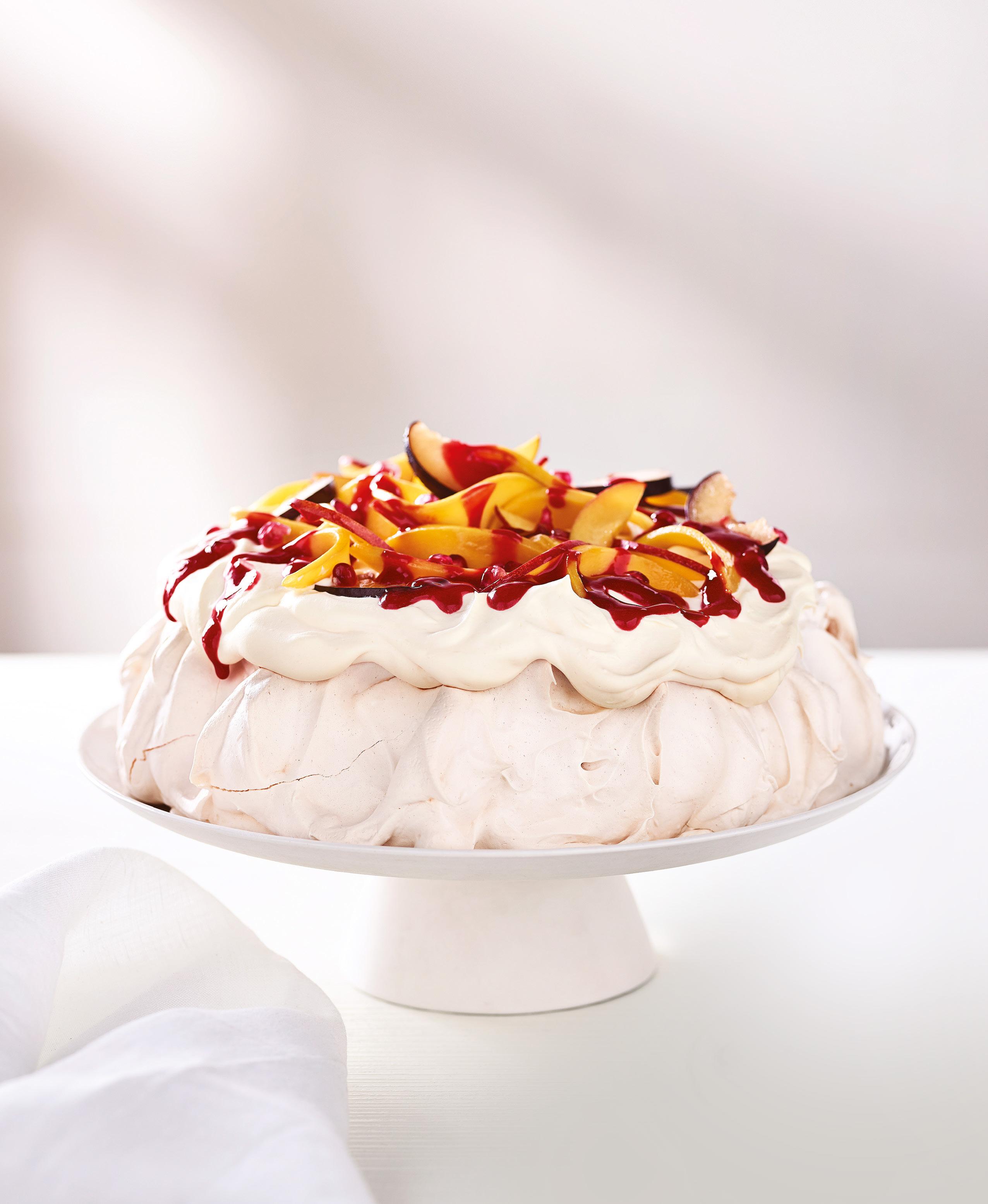
MILK FAT ALL NATURAL HALAL GLUTEN FREE For more information visit www.bullafoodservice.com.au care, craftsmanship & passion
we put quite a lot of butter in the bread, so using a benchtop mixer or any other mixer helps to make the dough. I personally use a double-arm mixer,” says Narusawa.
The baker lets the dough prove for at least two hours before it’s shaped and placed in symmetrical square pullman loaf tins. A whopping 20kg of flour is used to make 40 loaves, with each weighing in at around 910g after time in the oven. “I’m using convection ovens for my shokupan and it takes about half an hour to 35 minutes,” says Narusawa. “The temperature is usually set between 186–188 degrees Celsius, depending on how many tins I put into the oven.”
Shokupan is ubiquitous throughout Japan and is often consumed in the morning with sweet spreads and condiments. For Hashimoto, the bread has gone above and beyond its original application and has become a versatile foodstuff. “Back in the day, it was a common food to have for breakfast,” he says. “Some people still eat it for breakfast, but it’s also getting more popular at dinnertime as well.”
Narusawa says the bread is frequently consumed fresh and doesn’t always need to be toasted. “In Japan, we just eat it as is,” he says. “If it becomes stale, we toast it with some butter and honey and [use it for] heaps of different sandwiches with tuna or egg.”
Shokupan has firmly cemented itself as the national bread of Japan and is starting to gain traction in Australia among specialty bakeries. Although the light and fluffy loaf’s appearance is simple, it takes skill to get it right. ■
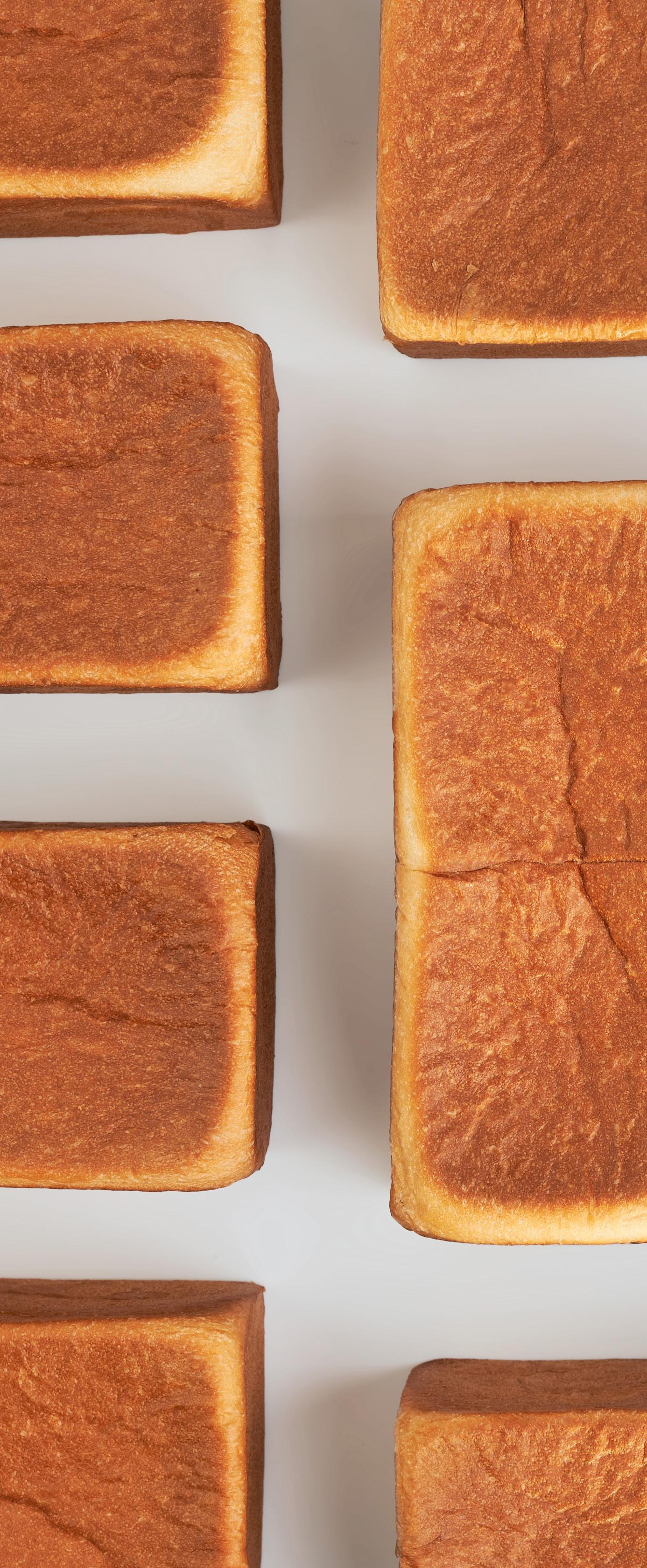
44 | Hospitality
FEATURE
// Shokupan
“I’m using wholegrain milling flour from New South Wales which is an organic and sustainable flour made on a small scale.”
Satoshi Narusawa






With 14 delicious flavours to choose from in our 3L range and 6 flavours in our 1L Squeeze Bottle range, Edlyn’s Flavoured Toppings are perfect for use in milkshakes on icecream or add them to your favourite desserts. l Halal Certified l Kosher Certified l 13 Gluten Free Flavours l Australian Made and Owned To order, contact your foodservice distributor. To see the full range visit: edlyn.com.au Follow us @edlyn_foods Scan me to watch video Australia’s favourite toppings in 14 delicious flavours NEW 1L SQUEEZE BOTTLES Available in 6 flavours
The great outdoors
An old billiards hall made way for a massive beer garden at Victoria Park.
PHOTOGRAPHY Shot by Thom
WHEN AUSTRALIAN VENUE Co. (AVC) purchased the Victoria Park Hotel in Perth from Coles, the pub had very little outdoor seating. Instead, it had a cavernous billiards hall that took up almost the entire back half of the property. The space had seen better days in terms of use and wear and clearly needed a rethink which would showcase Perth’s climate. “There was obviously a huge opportunity to develop it,” says AVC’s WA State Manager Joe Bailey. The group met with the community to understand what the locals wanted from the pub, which is one of three located along the Albany Highway — it was also the most in need
of a refresh. The idea of a huge beer garden emerged from conversations, which revolved around the creation of a venue that could be used for a range of purposes. “When we started working on the concept, we were thinking about building a pub for everyone and every occasion,” says Bailey. “We looked at Vic Park as a whole. It needed to be a versatile and welcoming space for everyone. One of the big things was a garden and an open area.”
AVC engaged Donnelly Design and One World Builders to help design and construct the new beer garden space, with the two companies

46 | Hospitality
FEATURE // Victoria Park Hotel
Small but mighty
Clean your venue in quiet comfort

The Innova 55 from Comac is a ride-on floor scrubber designed for large-scale cleaning jobs that require manoeuvrability in even the most congested areas. Smaller dimensions mean you can work around tables and chairs, storage units and any other important equipment that can’t be moved. Opt for ultra-quiet operation by switching to Eco Mode and you can clean at any time.

Innova 65 & 85 also available

1800 314 580 godfreyscommercial.com.au
working with the pub group’s own internal venue development team who approach renovation projects with the hospitality experience front of mind. “We work very closely with all departments — operations, marketing and also our property department — so there’s generally a decent cast working together to deliver projects,” says Bailey.
Tony Donnelly, principal of Donnelly Design, says collaborating with the AVC team was crucial.
“It’s important to have great clients who know what they want so you can hit the nail on the head really quickly,” he says. “AVC has that team, and it expedites the process. You can form things around that and throw your own ideas at them, but when everyone gels like that, it’s really good.”
Plans for the beer garden commenced in 2019 but were put on hold in early 2020 as Covid-19 gripped the nation and kept Western Australia closed to the rest of the country for some time. Design resumed late last year, and construction on the beer garden started in February this year. The space — known as The Park — opened in May.
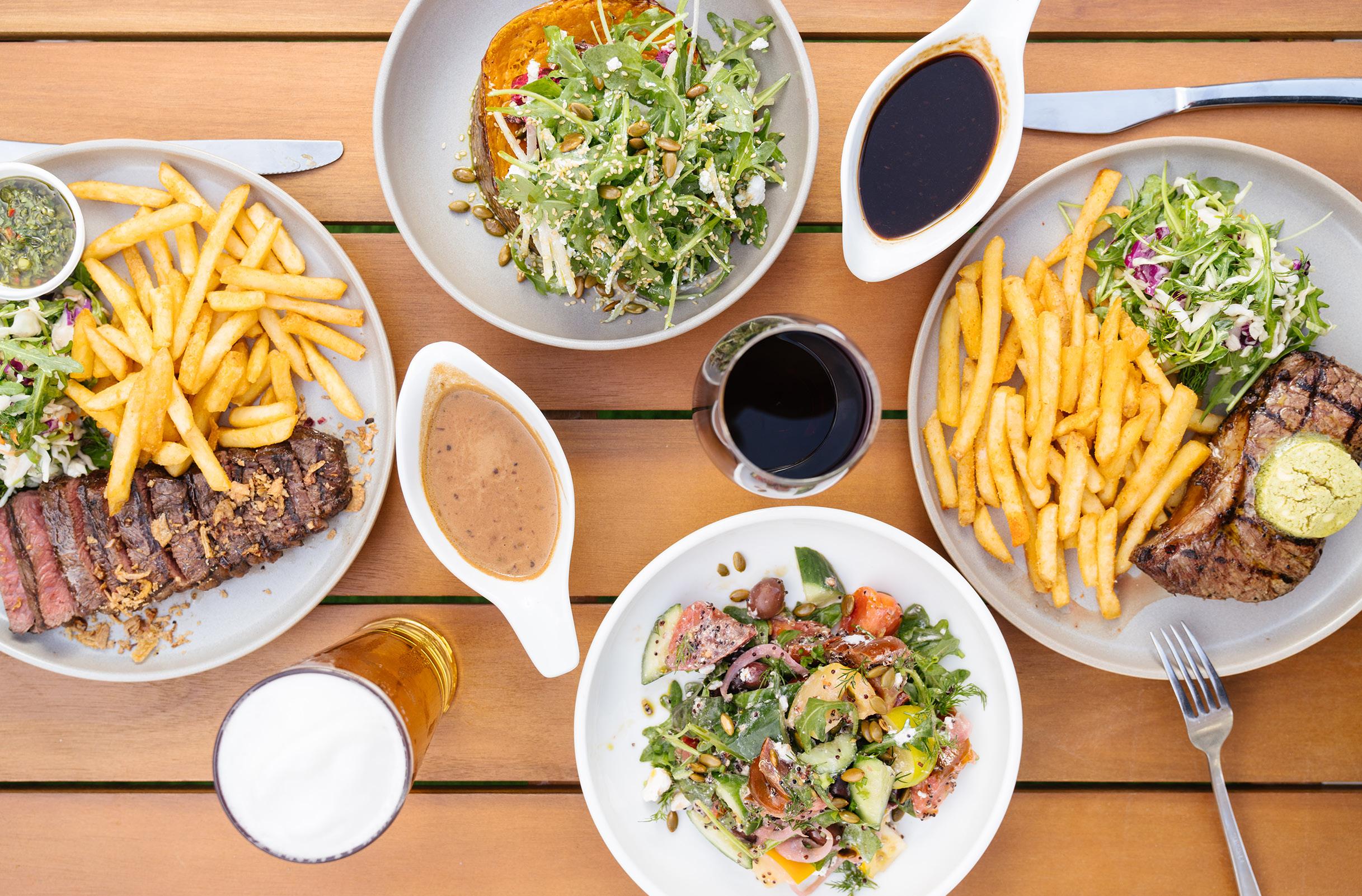
The Park renovation, which included an indoor–outdoor bar, covered 800sqm and cost $2.3 million. At first glance, it may seem like a lot to spend on a beer garden alone, but the space effectively doubled the footprint of the pub, allowing it to host an additional 450 people. “I think from a per-square-metre [perspective] it was the right number to spend because of the scale and size of the project and what we did to it,” says Bailey. “There was some significant work in removing rooves and structural stuff such as having to put cellars in and expand kitchens. But it’s certainly not like we’ve splashed out on marble fittings or anything like that. It’s where the project landed just due to the sheer size.”
The new space now includes a family area in one corner with low-table seating and a large playground. On the opposite side of the main entry from the carpark, there is an area with high-table seating and screens for sports viewing. There are a number of small nooks along the walls to afford patrons semi-private dining spaces and areas to socialise. The whole space is serviced by an indoor–outdoor bar that
48 | Hospitality
“When we started working on the concept, we were thinking about building a pub for everyone and every occasion.”
Joe Bailey
FEATURE //
Victoria Park Hotel


Scan the QR Code kuvings.com.au/commercial
connects the new beer garden to the front half of the hotel.
While the entire beer garden is very open, there are clear delineations between the areas suitable for families and those attending the venue without kids or pets. Donnelly says this was achieved by creating natural buffer zones. “The most important thing there is space,” he says. “If you can create a buffer zone between those areas, it’s fantastic. Luckily with Vic Park, you’ve got so much space you can do that. Most of the time, you delineate the spaces with major walkways and entries.”
Catering to families was a really important component of what Bailey wanted to achieve with the beer garden at the pub. He’s seen it done elsewhere and knows a modern approach ensures everyone has a good time — and that involves food. “My vision for the venue was inspired by what I saw down south around the Margaret River, which was people going out and enjoying themselves,” says Bailey. “Food is a huge driver of venues now and we do a hell of a lot of food out of the Vic.”
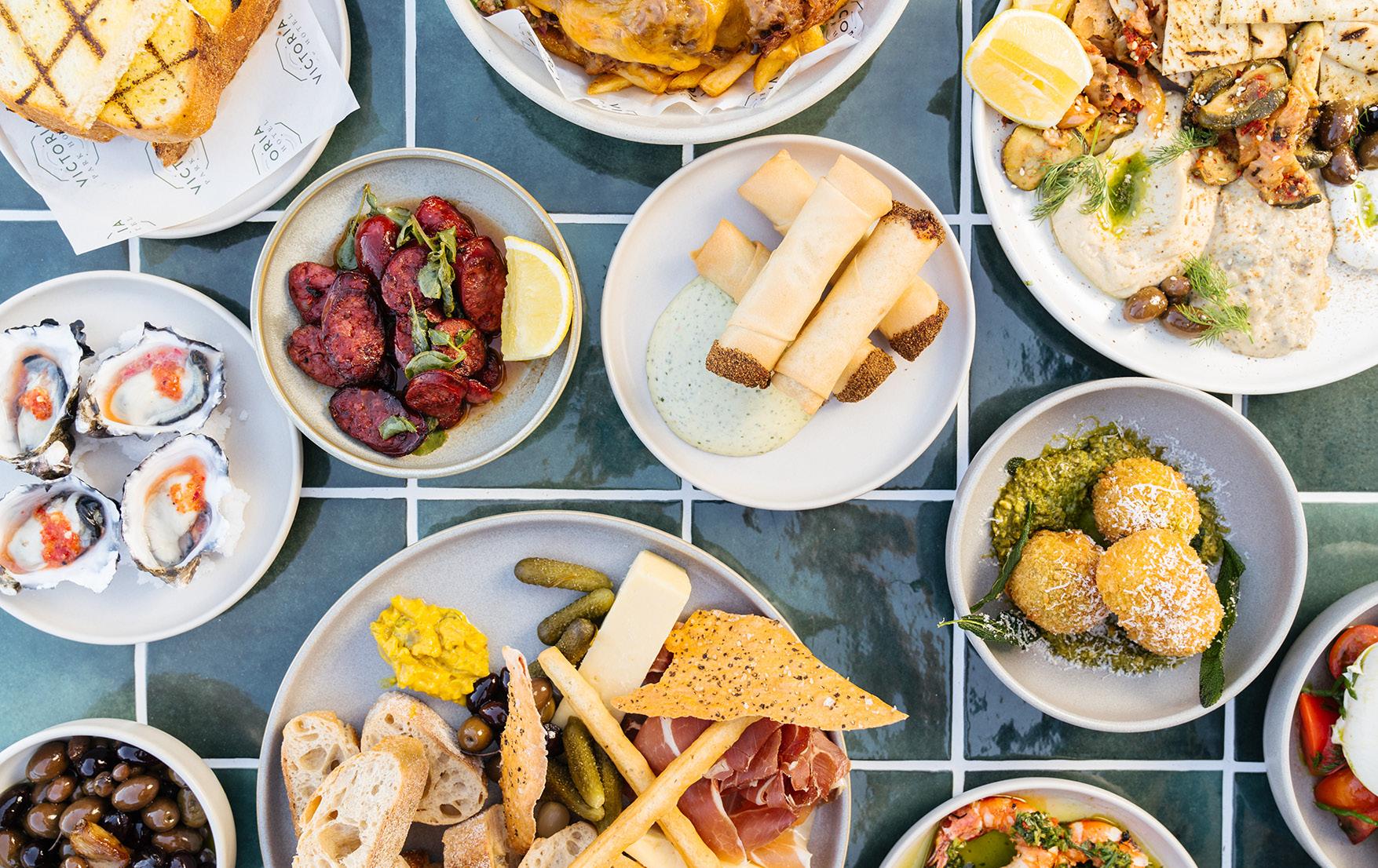
Head Chef Andre Nunes has designed a menu that covers grazing, grilling and cuisine infusion as well as pub classics such as fish and chips, burgers and chicken parmigiana. Entrées include crunchy haloumi cubes served with tomato salsa and spicy mayo, freshly shucked oysters with lime and chilli dressing, salt and lemon pepper calamari as well as burrata teamed with warm heirloom tomatoes, samphire and crispy bread.

Burgers cover a classic cheeseburger as well as fried chicken with the category also including a steak sandwich and a prawn and lobster roll. There’s also chilli mussels, tiger prawn linguini, lamb pie, chicken schnitzel, steaks, salads, kids plates, sides and desserts — basically, there’s something for everyone.

50 | Hospitality FEATURE
// Victoria Park Hotel
Head Chef Andre Nunes has designed a menu that covers grazing, grilling and cuisine infusion.





All your food suppliers. All in one place. 100% free to use for hospitality venues. $50 off your first 5 orders. Use code HOSPO50 at checkout. * *Limited to 5 uses per customer. Enter code at checkout to redeem. Valid until 31/12/2022. 1300 725 899 support@foodbyus.com +61 448 523 085
The design details of The Park ensure the space feels casual and welcoming to all, which was essential for the AVC team. “We really didn’t want people to think, ‘Is this for me?’ Everyone who has come in knows it’s a really welcoming hotel,” says Bailey.

Part of creating a casual inviting atmosphere was the selection of materials used across the space. Concrete, artificial turf and breezeblock walls convey a sense of ease among patrons. “Things like the breezeblock walls around the bathrooms really informalise the space,” says Donnelly. “Tiled surfaces are a lot more formal than breezeblocks, which almost have that ‘found object’ look, so in a way, you’re bringing a more eclectic feeling to it.”
Additional colours and textures were added to the bar through blue and white tiles as well as bronze accents. Other details include neon light wall hangings, mirrors and greenery. But the big wow factor in the space are the murals painted by local artists. Black swans denote the Swan River and there is also a painting of Queen Victoria, who the pub was named after. “We’ve got graphics and artwork everywhere you look,” says Donnelly. “It lightens the whole thing and is what makes it. The artists did such a great job.”
The space has been well-received by locals and The Park has received plenty of positive feedback since opening. Bailey was at the venue every day for the first three weeks of trading and said patrons had nothing but positive things to say. “It was so good to have people come up and say, ‘We absolutely love it, thank you so much for doing this’. People weren’t trying to pick faults, they thought it was amazing, which was a really good feeling for us.” Trade has been steady since the venue opened, and Bailey expects it to get even busier now the warmer weather has arrived. “It’s doing very well so far. We can’t wait to see what summer brings.”
This story was originally published in Australian Hotelier.
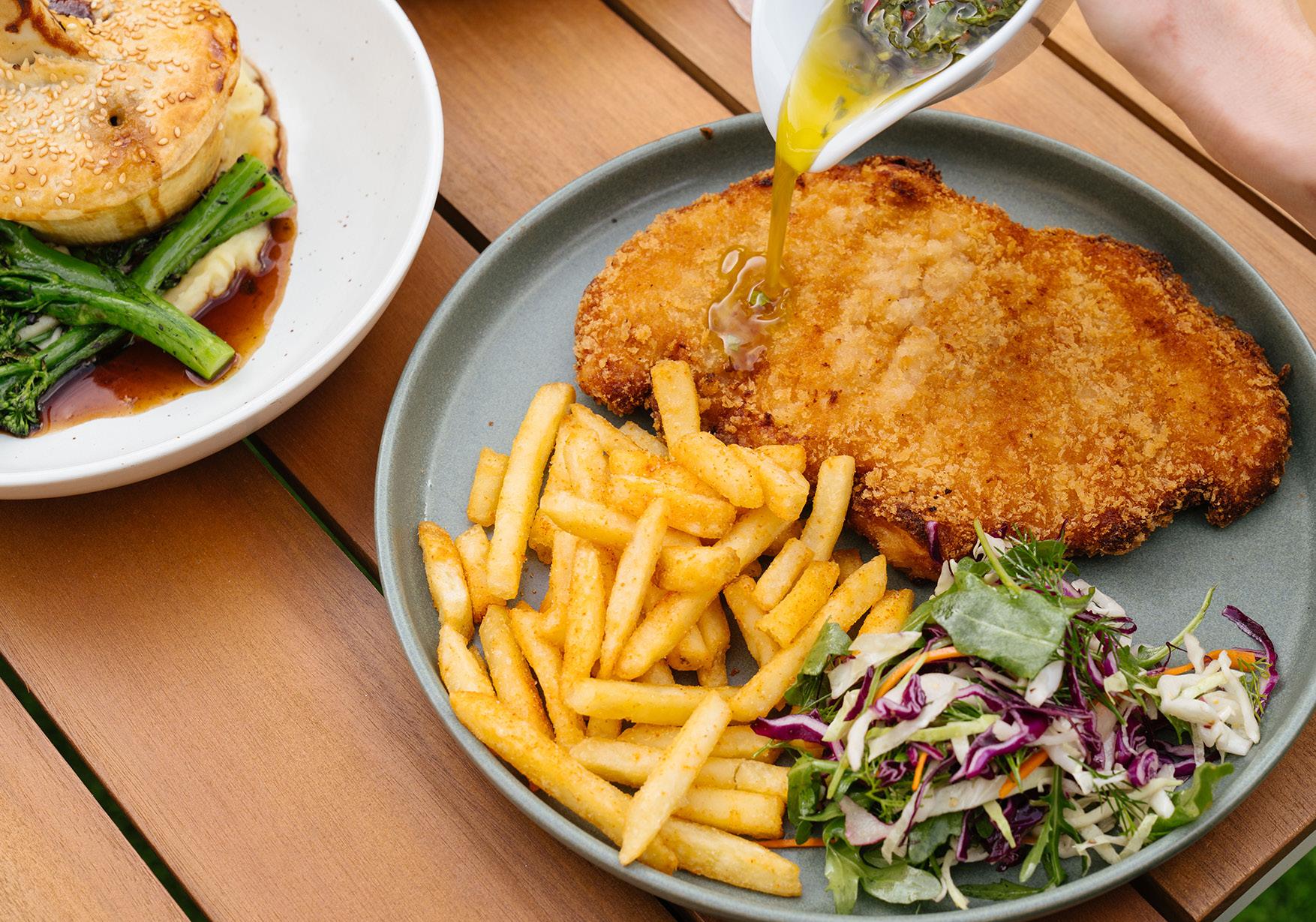
52 | Hospitality
■
FEATURE // Victoria Park Hotel
Professional Solution for Food Storage


To meet exacting standards demanded in the F&B industry, our professional fridges and freezers are engineered to ensure reliable storage conditions. Designed for integration in a HACCP concept, Liebherr‘s energy efficient appliances are easy to clean, allowing for optimum food hygenie. home.liebherr.com.au
 Hotels,
Hotels,
Restaurants & Catering Distributed by: Contact Us: 1800 685 899 Email: sales@andico.com.au
Jagged teeth are designed to smash and break up ingredients
Cocktail muddler
A bartender’s best friend.
Press down and turn handle
Releases essential oils from herbs and citrus
Extracts juice from fruit
Commonly used to make an Old Fashioned

Ideal for drinks and cocktails
Made from wood, metal or plastic
Dishwasher-safe or handwash to ensure longevity
54 | Hospitality EQUIPMENT // Cocktail muddler

Adam Beckett
I COME FROM the countryside in Wales, and I was never too fussed on cities. It was just where I went because that’s where the jobs were. I’ve been on the Mornington Peninsula for seven years now, so I’m settled and I’m not really going anywhere. It’s a nice part of the world and it suits me well because I like being by the beach. I still forage here and there, and I can go out and grab a few things; it speaks to the nature of the area.
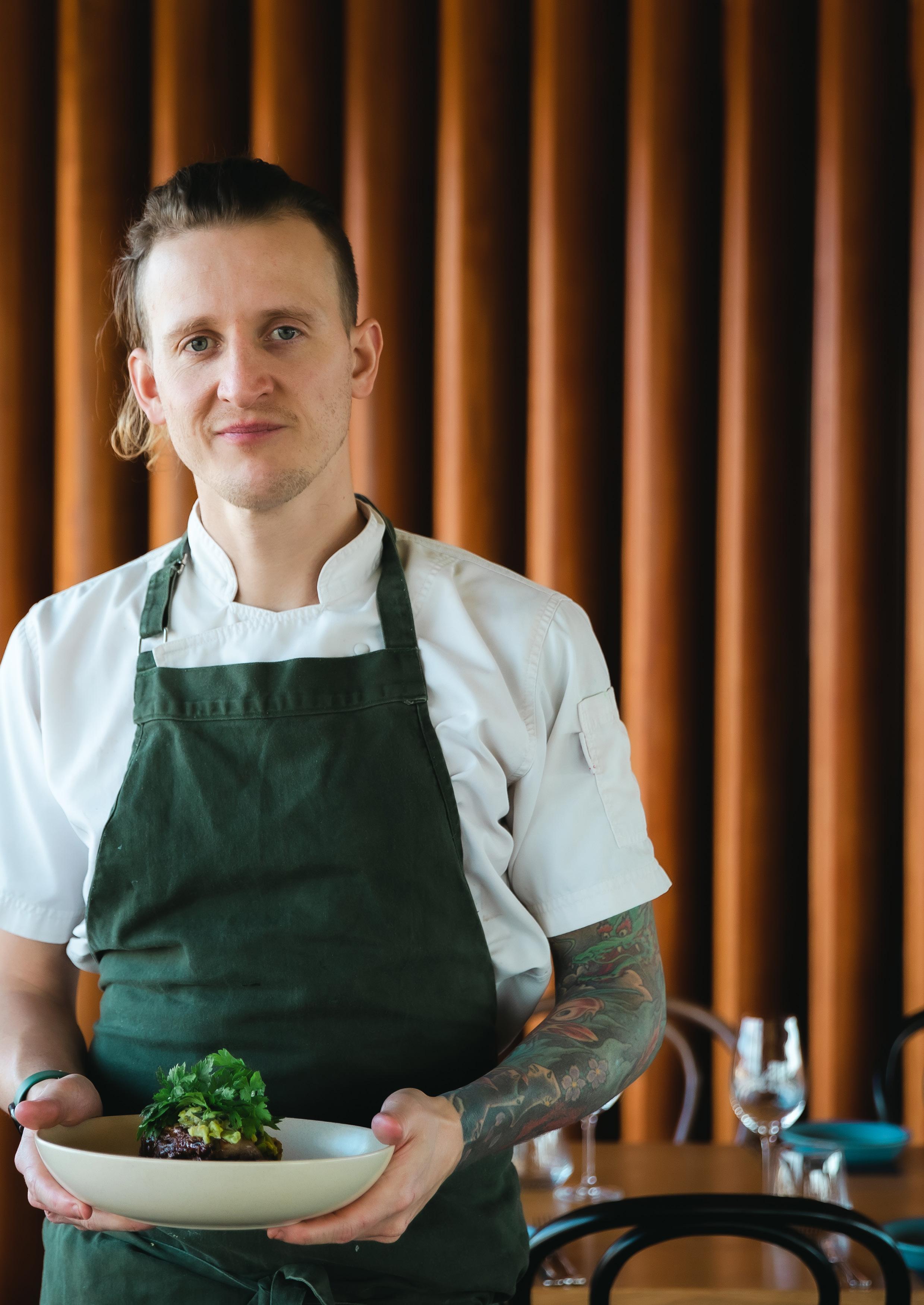
Arilla has a massive property, and they don’t do anything to change it, they just leave it and there are lots of birds and animals. It suits me in the sense that it’s just like my art and my personality.
It’s not easy to [source ingredients] locally, but I try to stay within the confines of Victoria. It’s a sensible thing to do anyway because I don’t want people questioning why
5 MINUTES WITH ... // Adam Beckett
Arilla’s head chef is taking a pared-back approach to cooking on the Mornington Peninsula.
56 | Hospitality
Walking together, working together. Although from very different backgrounds, these industry luminaries share many wonderful traits: talent, passion, respect and a great love for that no-waste, forever-giving, magical beast known as - The Pig. Masters of their crafts, they know full well, the endless delicious possibilities it provides. They are PorkStars. porkstar.com.au
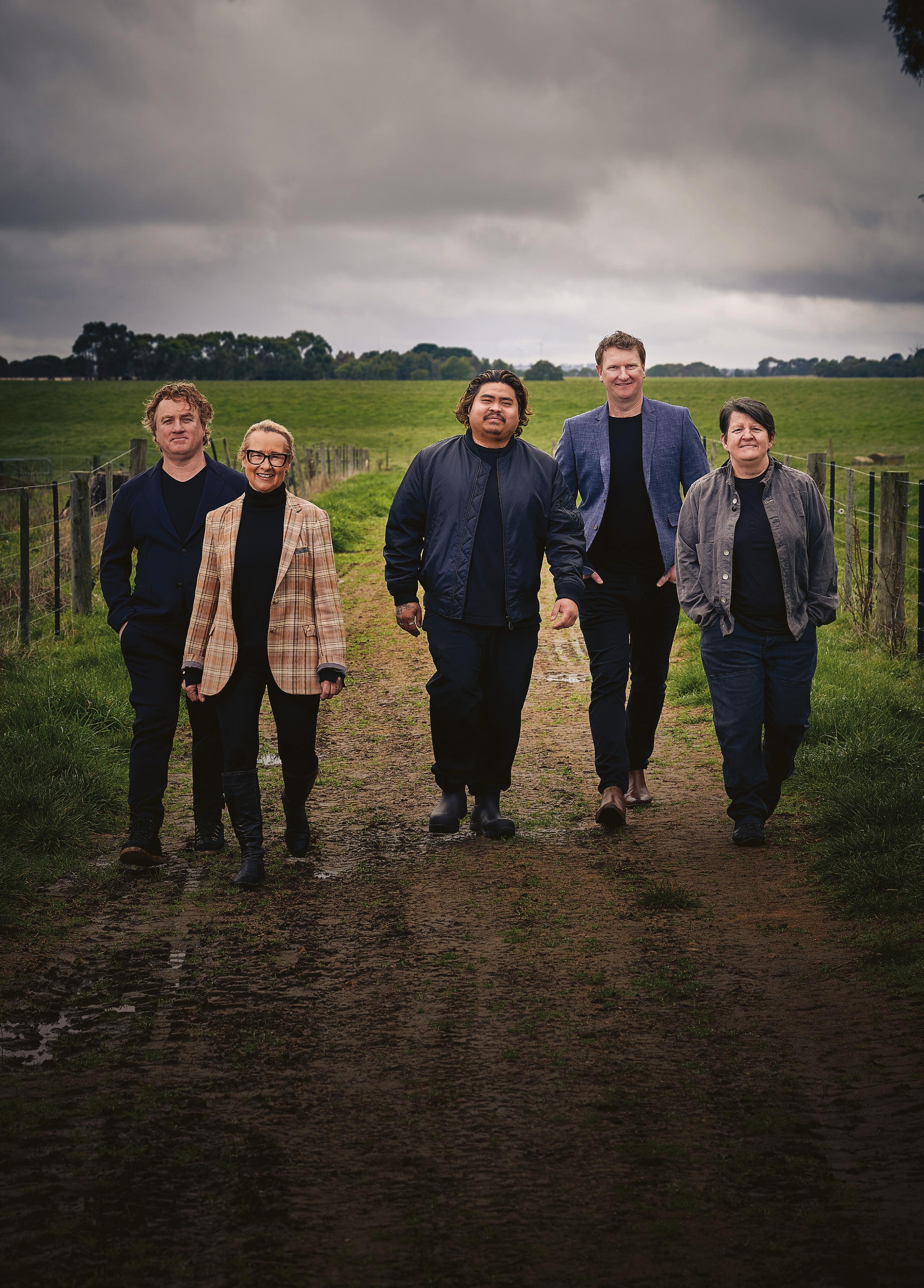 Pictured (L-R): Adrian Richardson - Chef, Judy Croagh - Farmer, Ross Magnaye - Chef, Mick Nunn - Charcutier, Annie Smithers - Chef.
Pictured (L-R): Adrian Richardson - Chef, Judy Croagh - Farmer, Ross Magnaye - Chef, Mick Nunn - Charcutier, Annie Smithers - Chef.
I’ve got strawberries on in winter. I find it’s a point of pride.
I would say [the menu] is modern Australian, which is quite a broad style of food. It’s simple in appearance, but it’s familiar as well. I’m not doing anything silly; I stick to flavour profiles people understand. The beef cheeks are popular and I do them with Paris mash. I call it Paris mash, but it just means there’s a lot of butter in it.

Another dish is an entrée where I bone chicken wingettes. It’s a cheaper cut, but is still a nice piece of meat. We serve them with dashi stock, fried egg, chilli and nori. I used to have the stock in a breakfast made by a Japanese chef I worked with and I loved it. People are always impressed by it.
My time at Quay helped me understand the importance of processes. If you’ve got a process, it’s important to stick to it and keep it detailed and consistent. Quay is more selective and places ingredients in a non-symmetrical way, whereas Vue de monde serves [dishes] more organically. I use the Vue de monde approach more in my day to day because it’s easy to execute if you’re willing to be adventurous.
My experience at Arilla has been great so far. The owners are all nice, humble and easy to work with. There’s plenty of understanding these days and everybody wants to have a healthier work–life balance. People really care and it’s become an important part of life here.

58 | Hospitality
■
If you’ve got a process, it’s important to stick to it and keep it detailed and consistent.
5 MINUTES WITH ... //
Adam Beckett
www.hostplus.com.au LOW ADMIN FEE General advice only. Consider the relevant Hostplus PDS and TMD at hostplus.com.au, and your objectives, financial situation and needs, which have not been accounted for. Host-Plus Pty Limited ABN 79 008 634 704, AFSL 244392 as trustee for the Hostplus Superannuation Fund ABN 68 657 495 890, MySuper No 68 657 495 890 198. HP1972 Compare Hostplus With super, every dollar counts. That’s why at Hostplus, we aim to keep our admin fee as low as possible, so more money stays in your super account for your retirement.
D E S I GNED AND E N GI N E E RE D
IN AU S T R ALIA TO ME E T
Airex’s extensive range of refrigeration and display products, exclusive to Stoddart, has been designed and tested in Australia to master the elements of its diverse climate.

Airex’s innovative and sleek line-up will fit seamlessly into any commercial setting, in retail, commercial kitchens, cafés, in either front or back of house applications.
Providing outstanding food safety standards, hygiene and high-quality components, Airex sets a new standard for refrigeration and display within the food service market.
Scan to view the range online
MASTERING THE ELEMENTS

AU S TR ALIAN S TAN DARD S








 MOONAH
MOONAH






























 Photography by Mia Forrest
Photography by Mia Forrest






 EDITED BY Annabelle Cloros
EDITED BY Annabelle Cloros





 WORDS Aristine Dobson
WORDS Aristine Dobson







 WORDS Annabelle Cloros PHOTOGRAPHY Marnie Hawson
WORDS Annabelle Cloros PHOTOGRAPHY Marnie Hawson



















 FEATURE // Hard kombucha
FEATURE // Hard kombucha









 WORDS Aristine Dobson
WORDS Aristine Dobson














































 Hotels,
Hotels,



 Pictured (L-R): Adrian Richardson - Chef, Judy Croagh - Farmer, Ross Magnaye - Chef, Mick Nunn - Charcutier, Annie Smithers - Chef.
Pictured (L-R): Adrian Richardson - Chef, Judy Croagh - Farmer, Ross Magnaye - Chef, Mick Nunn - Charcutier, Annie Smithers - Chef.










